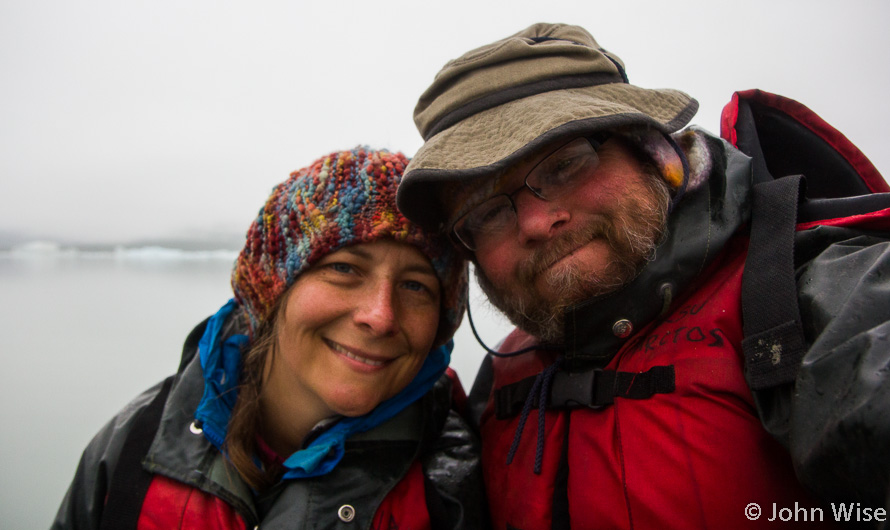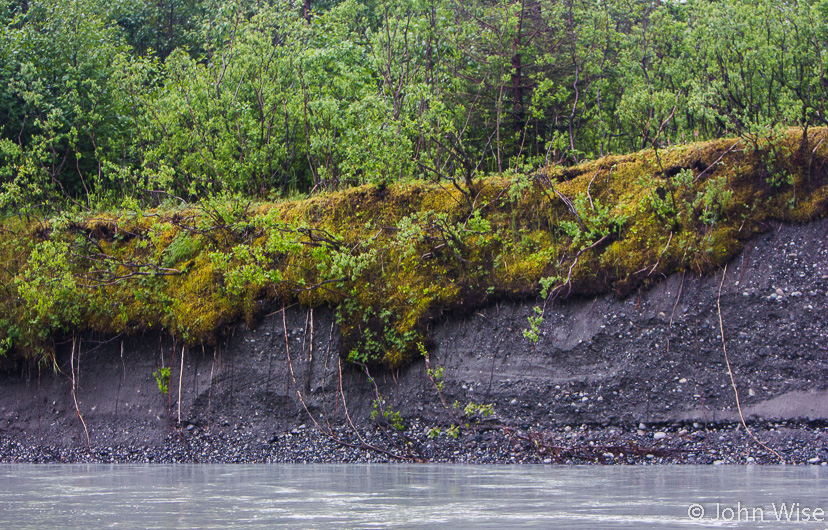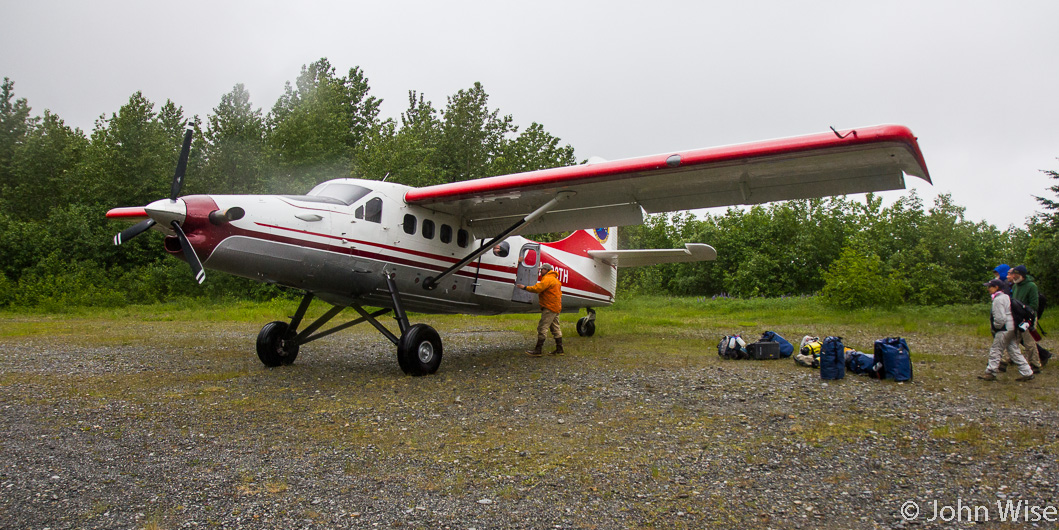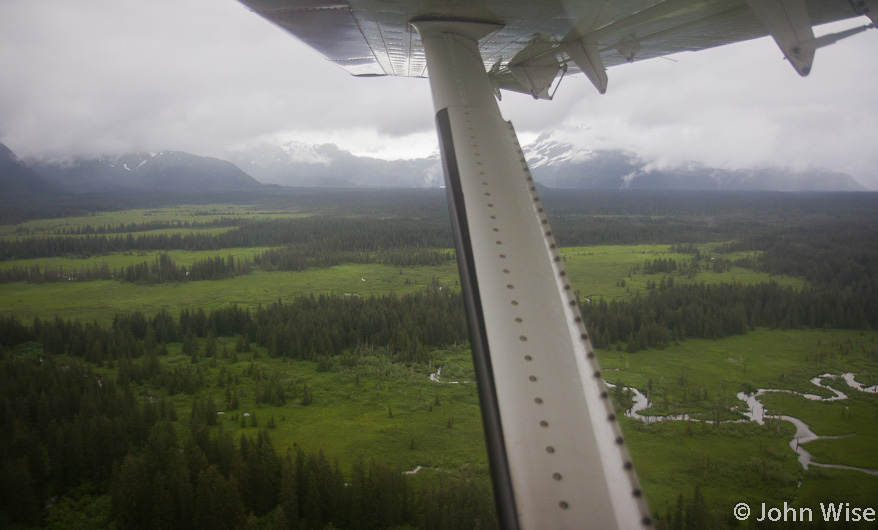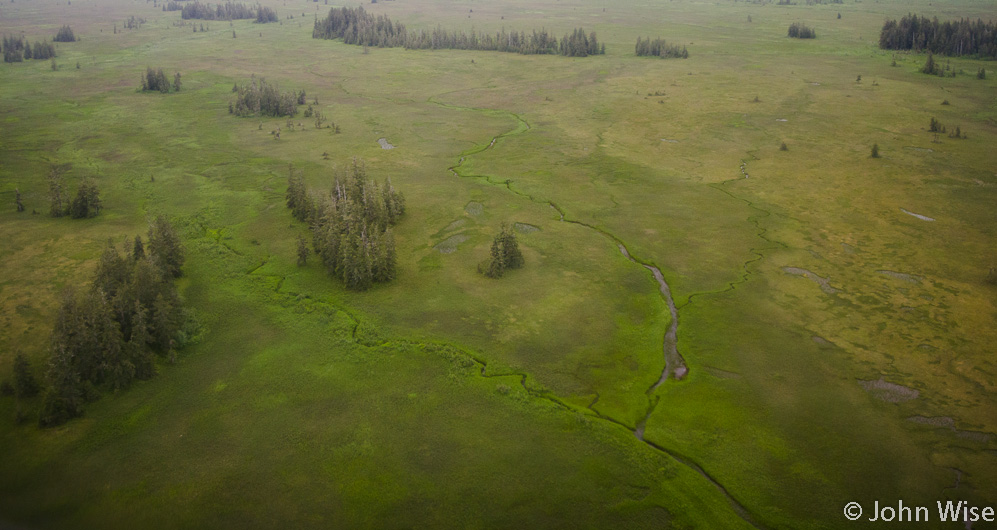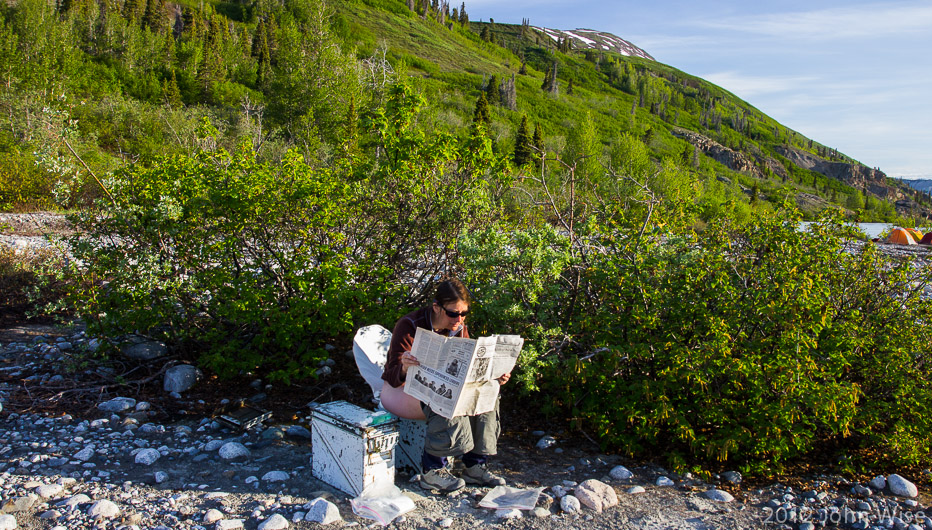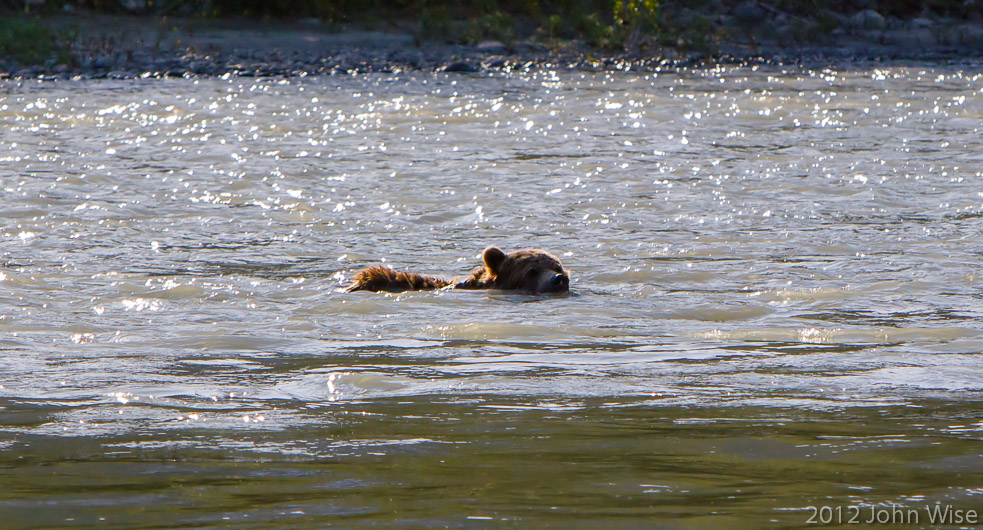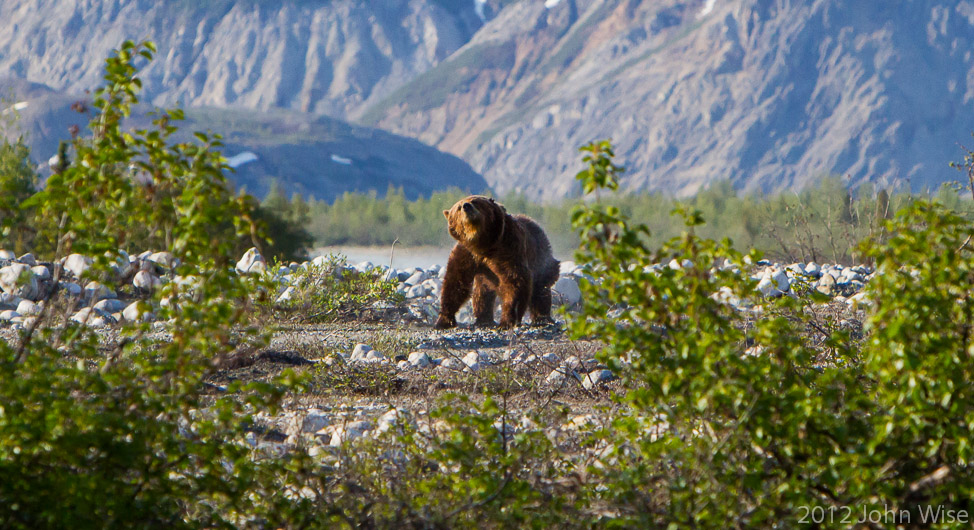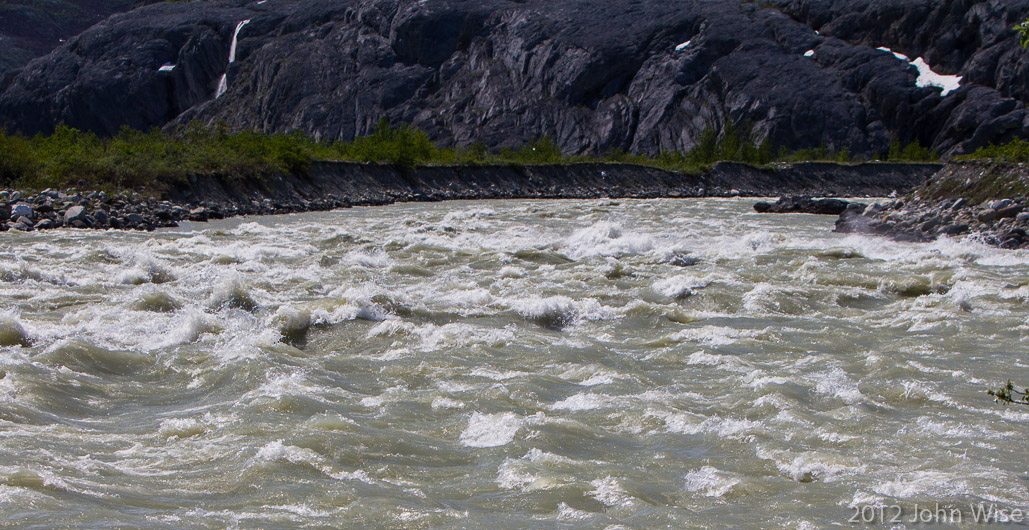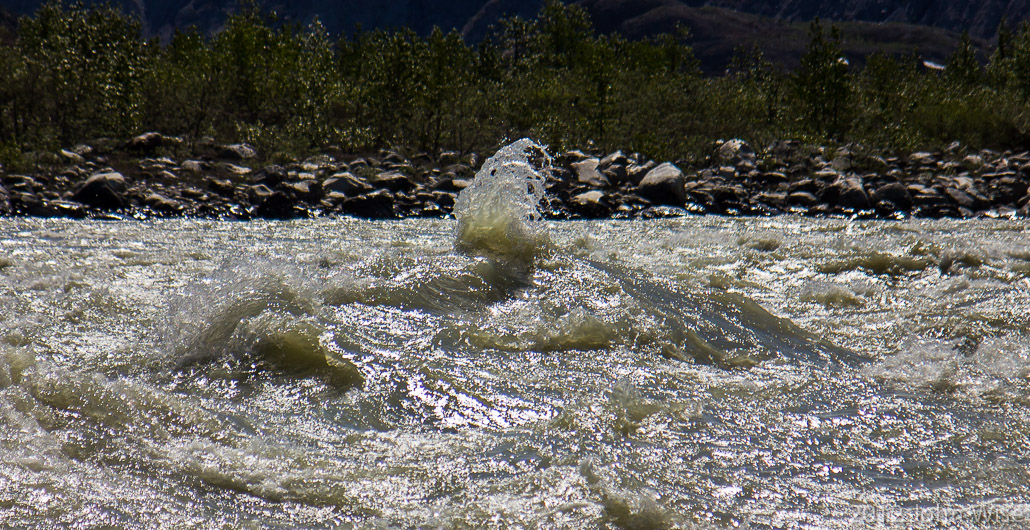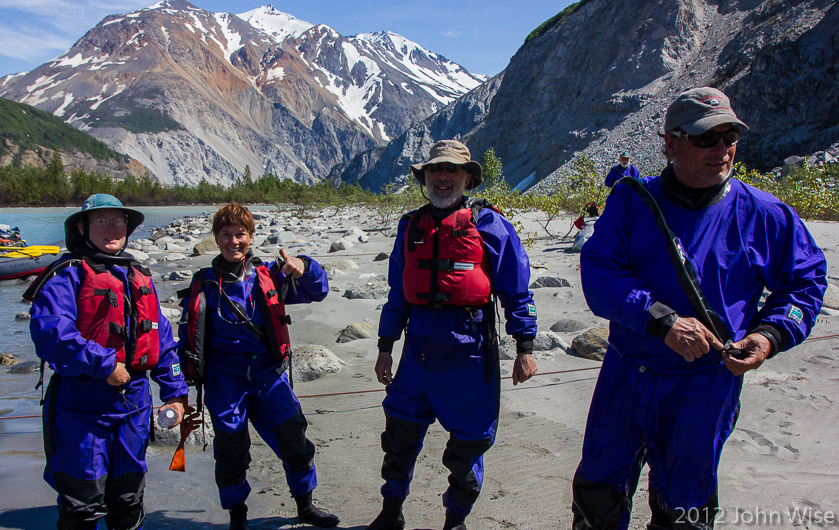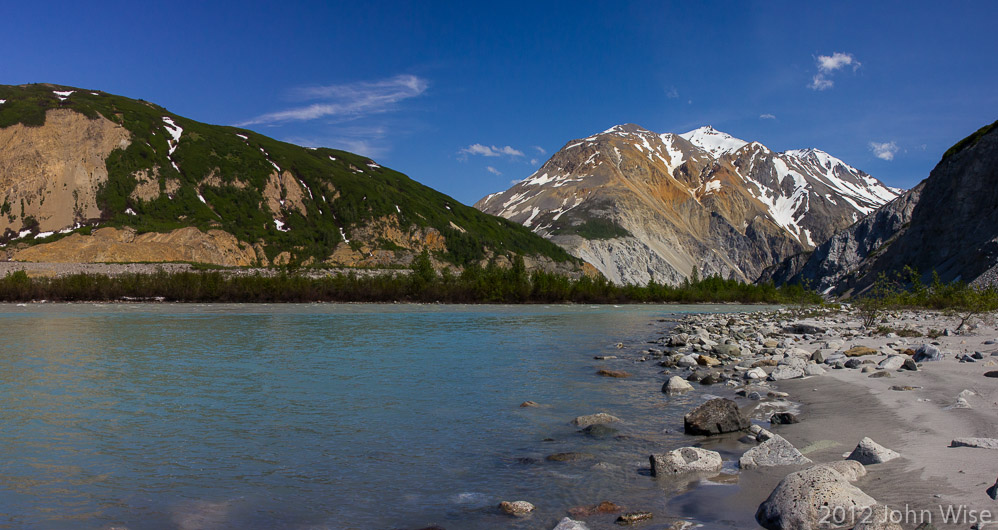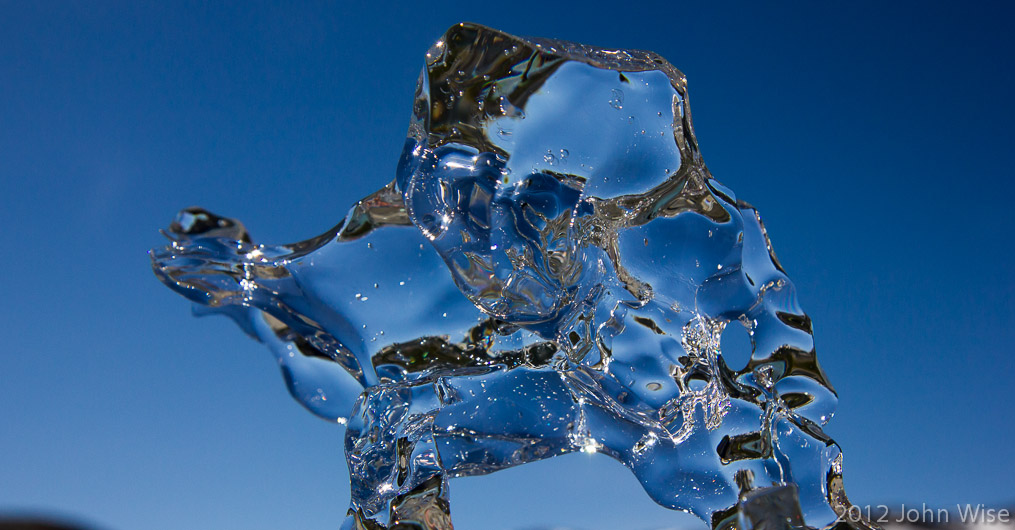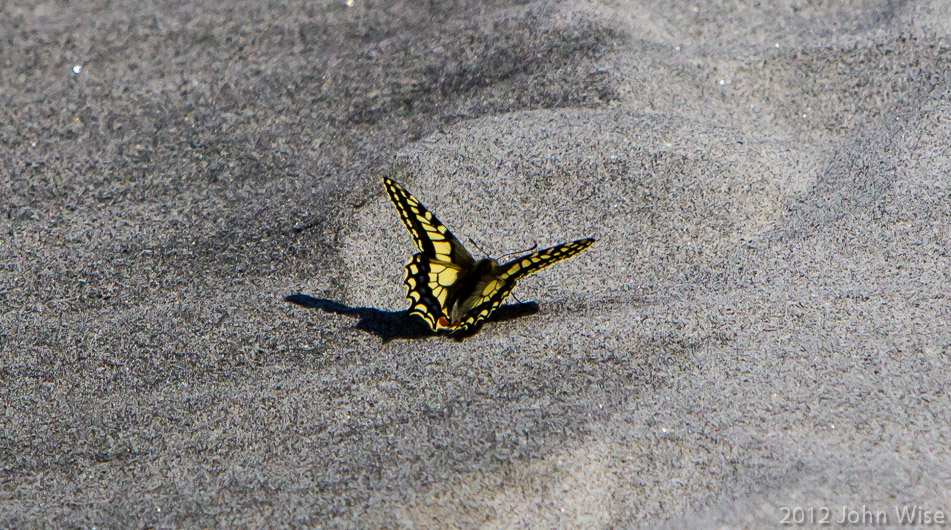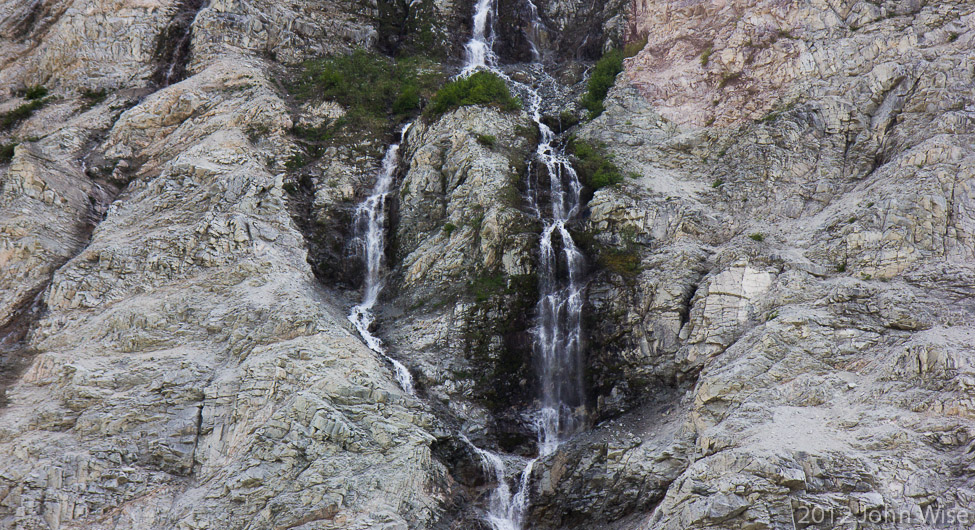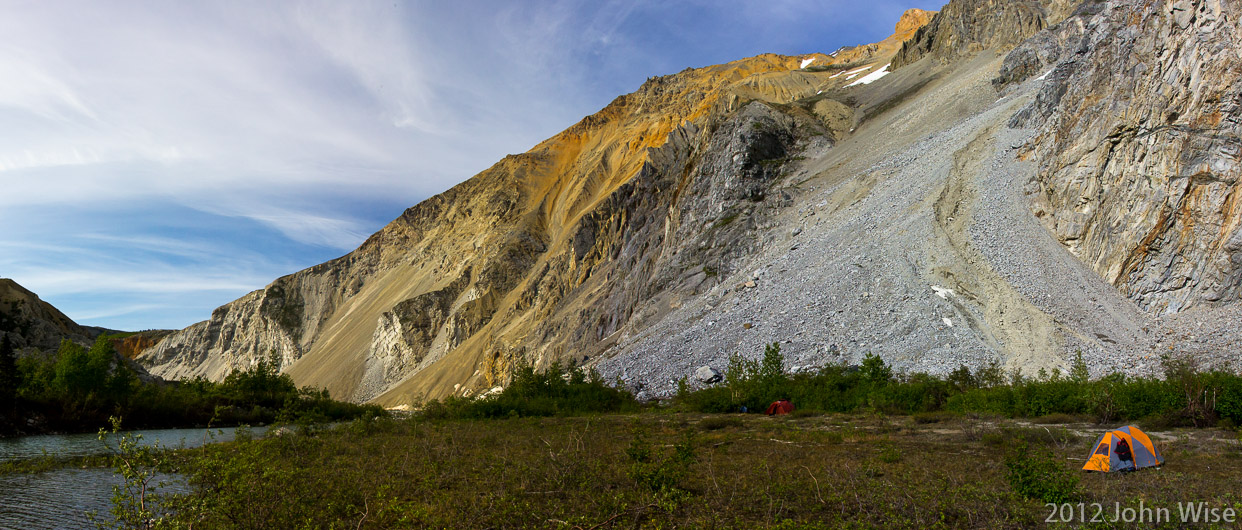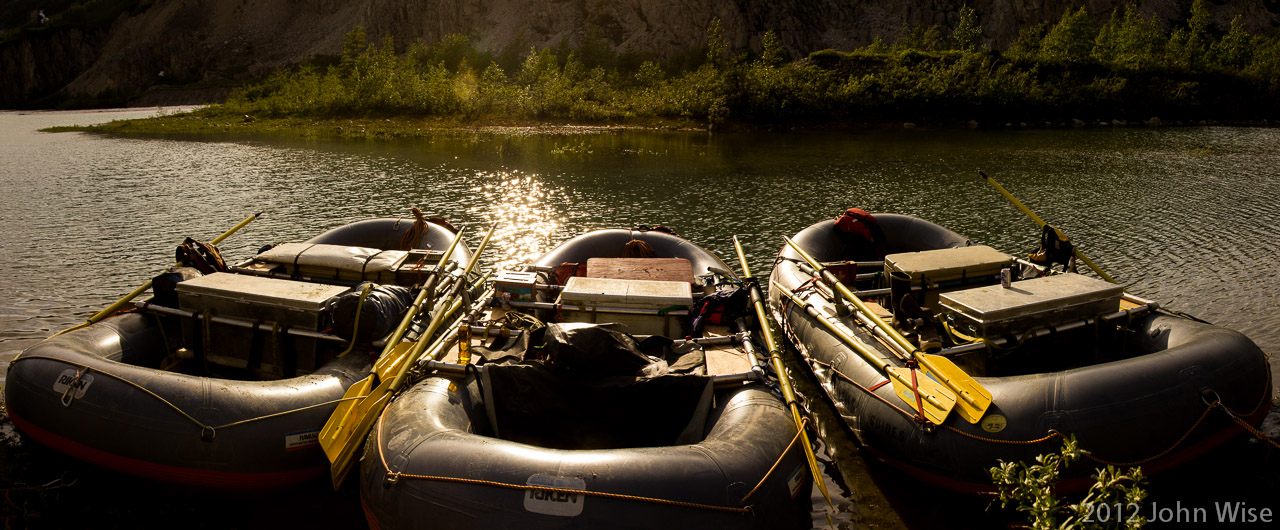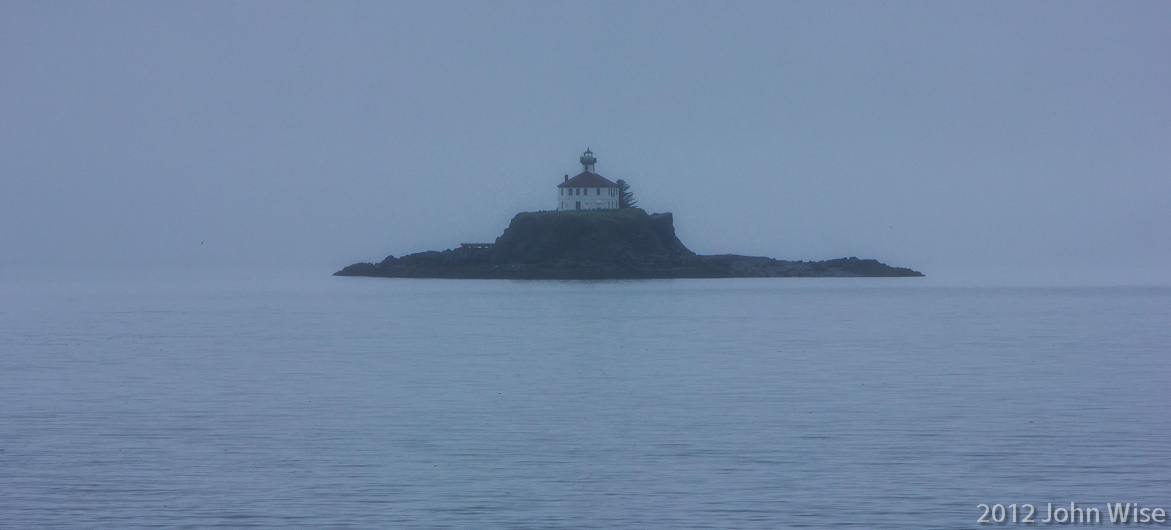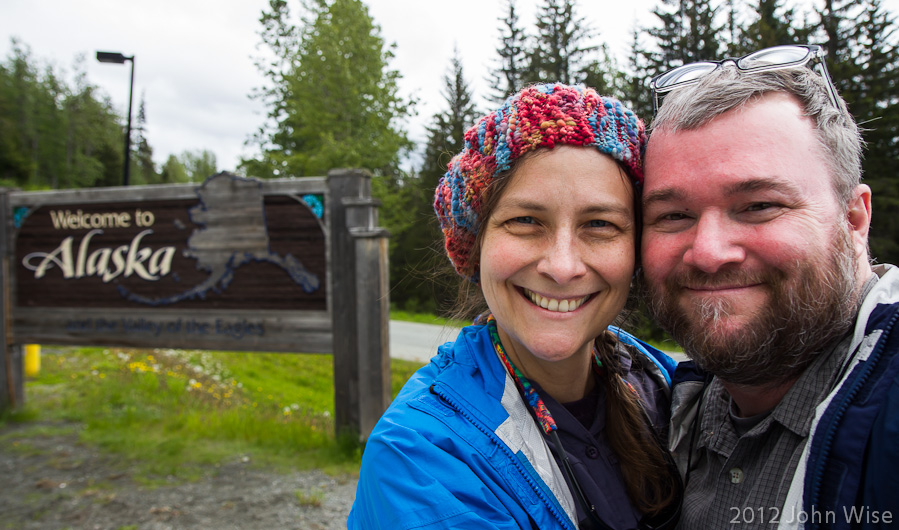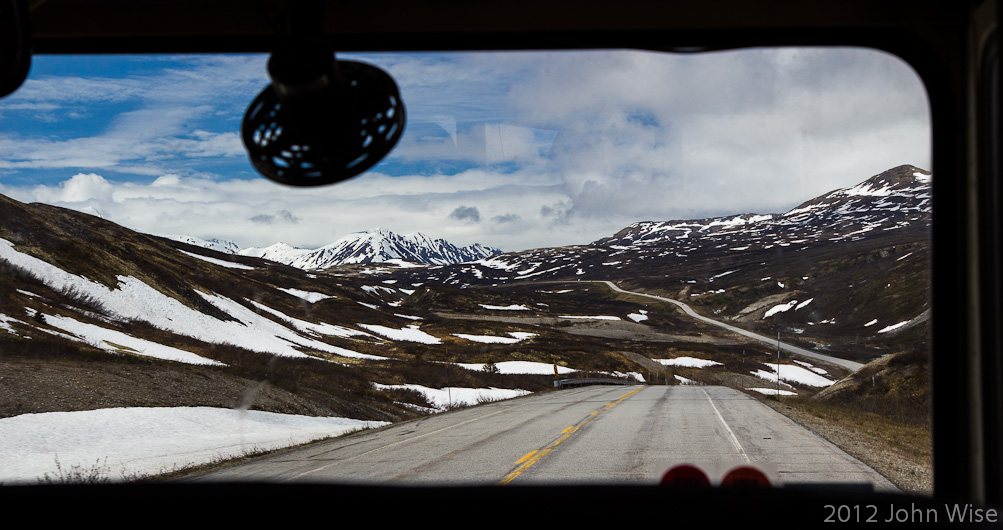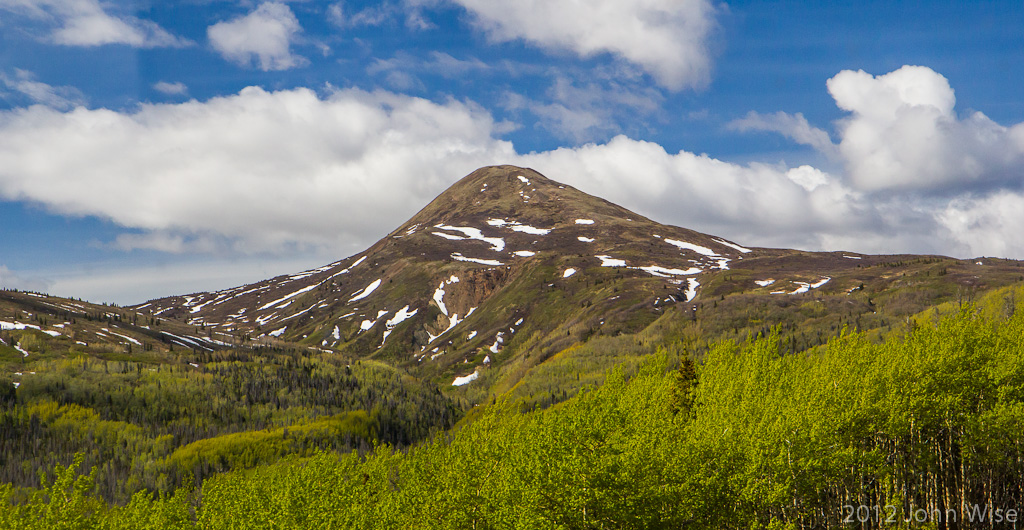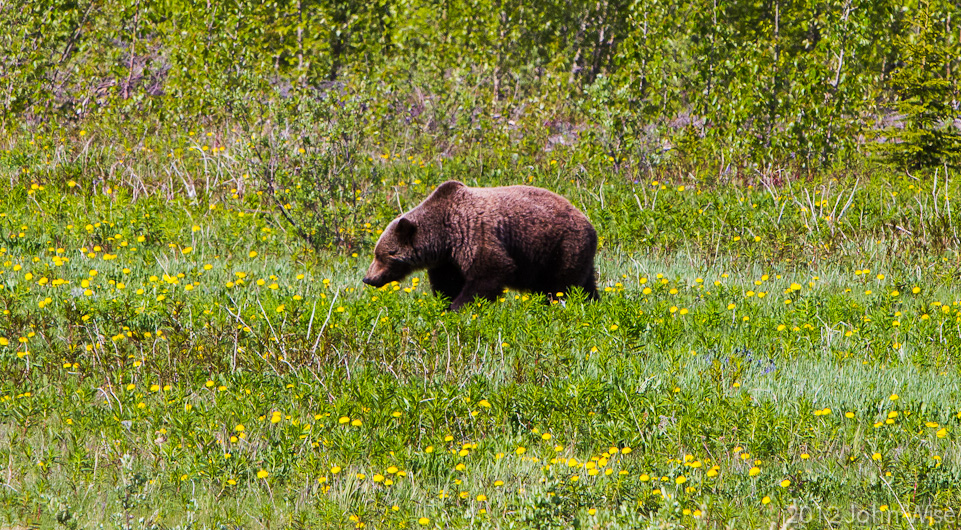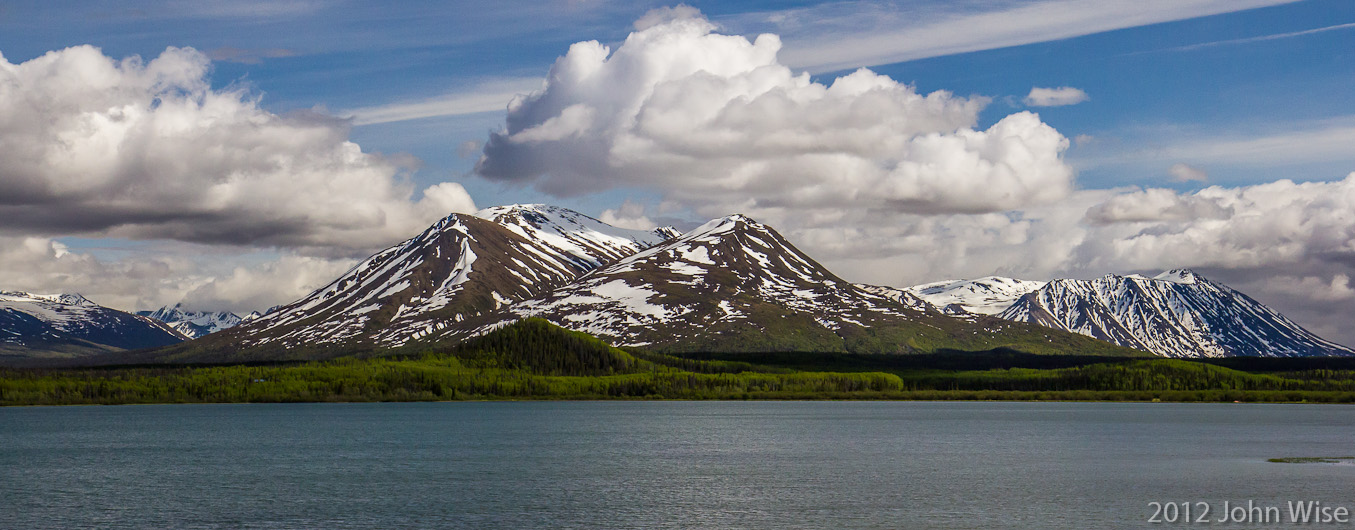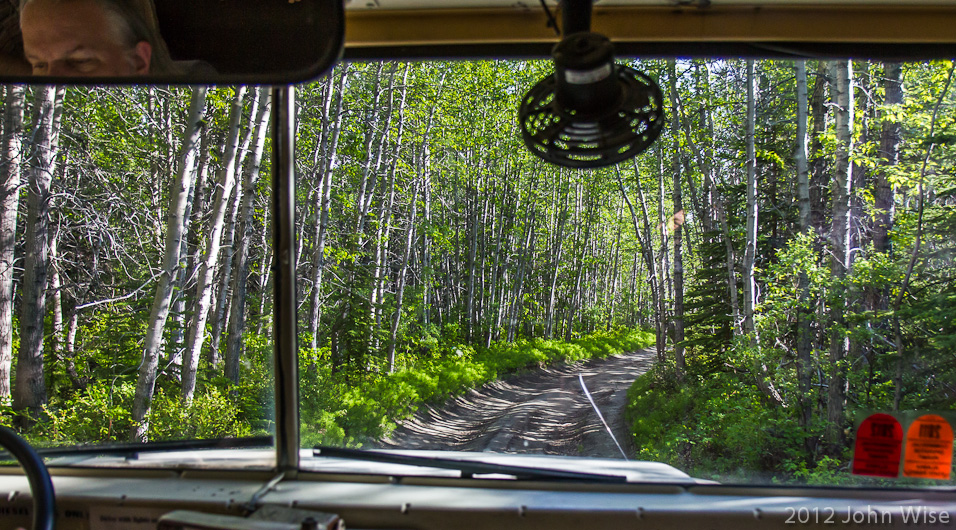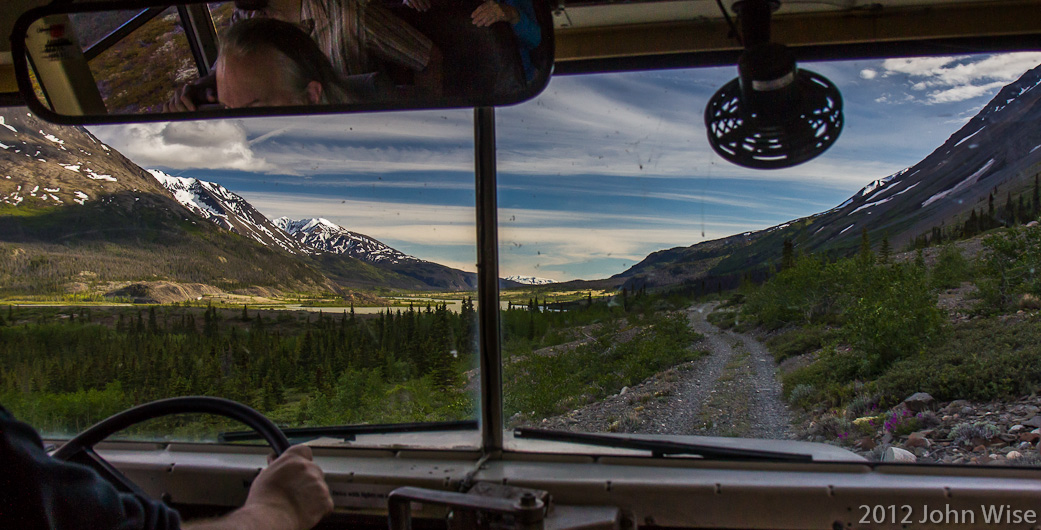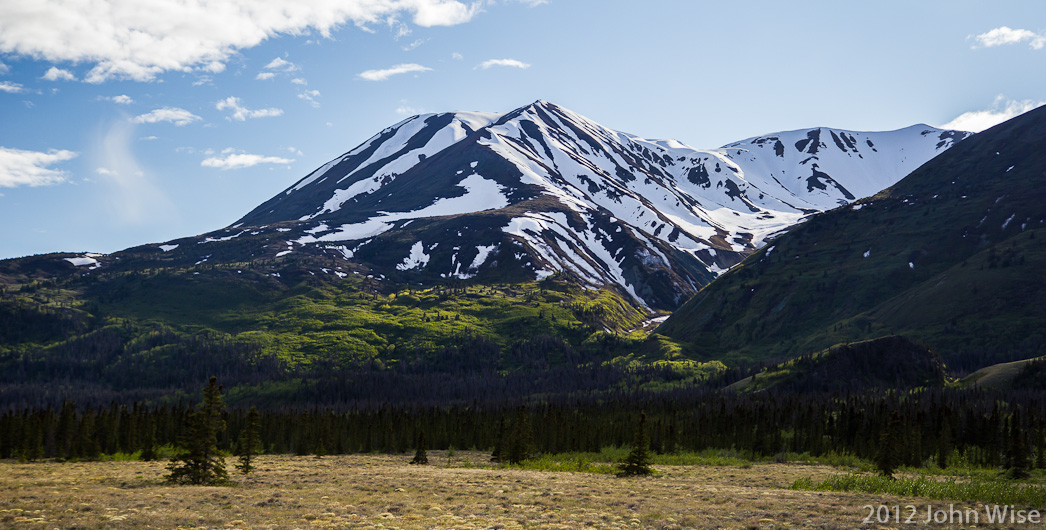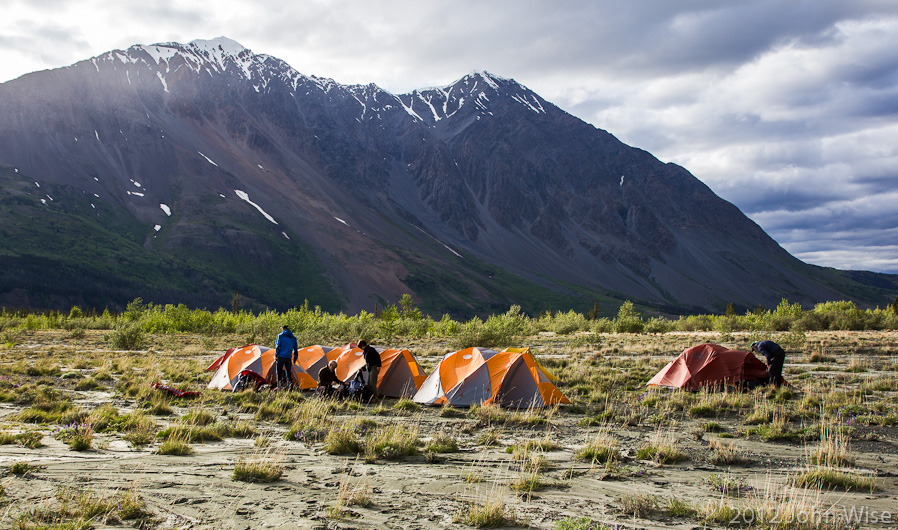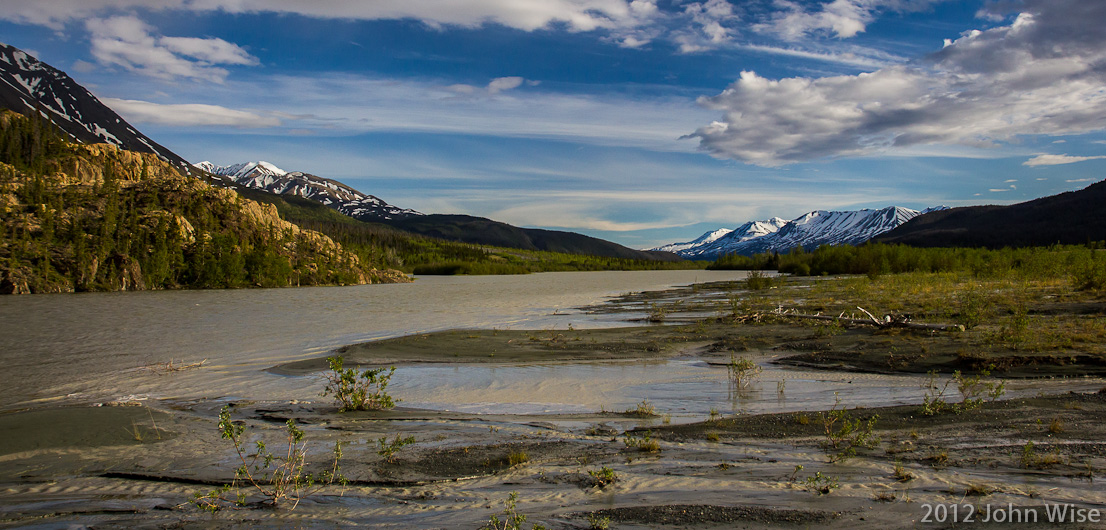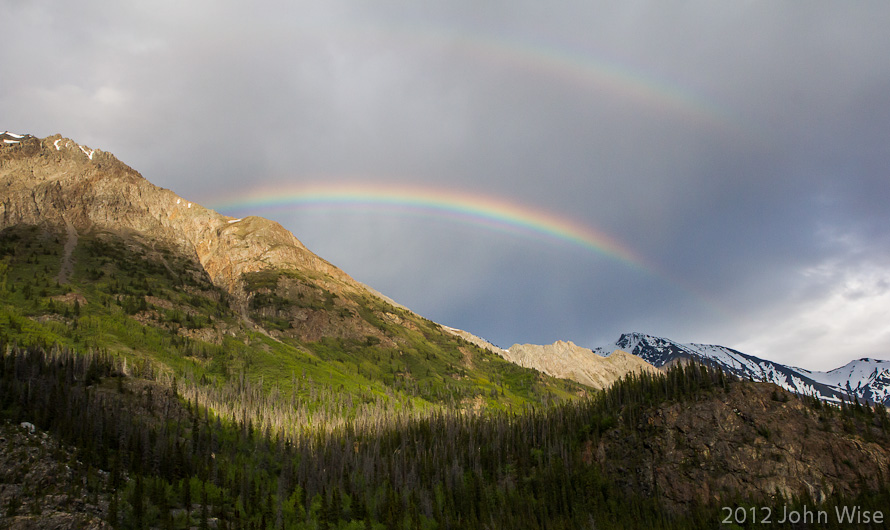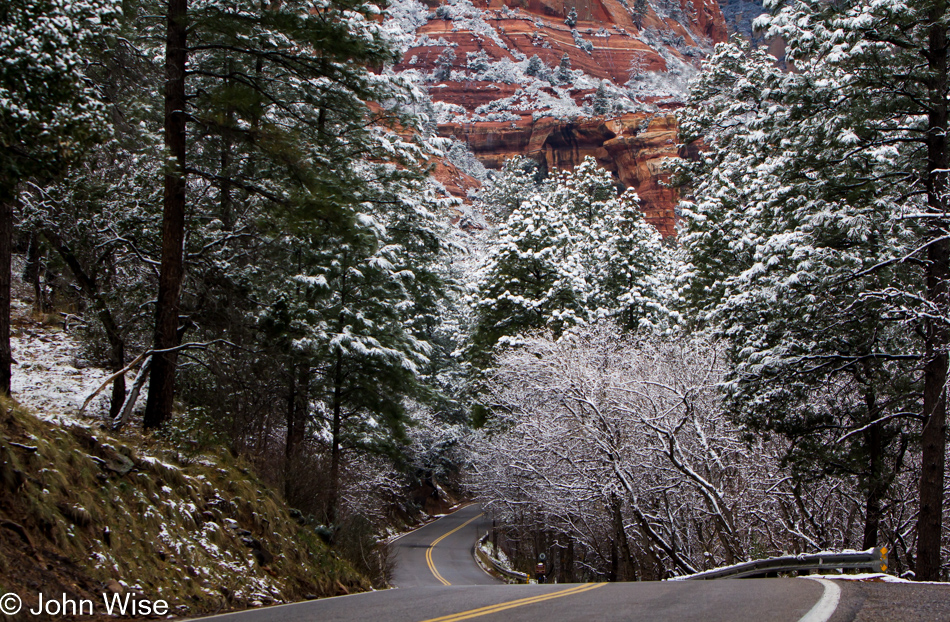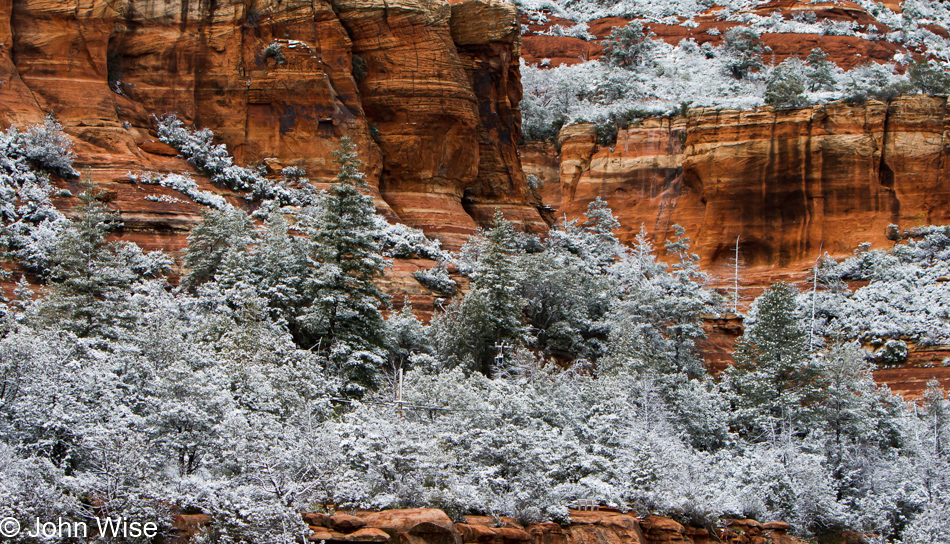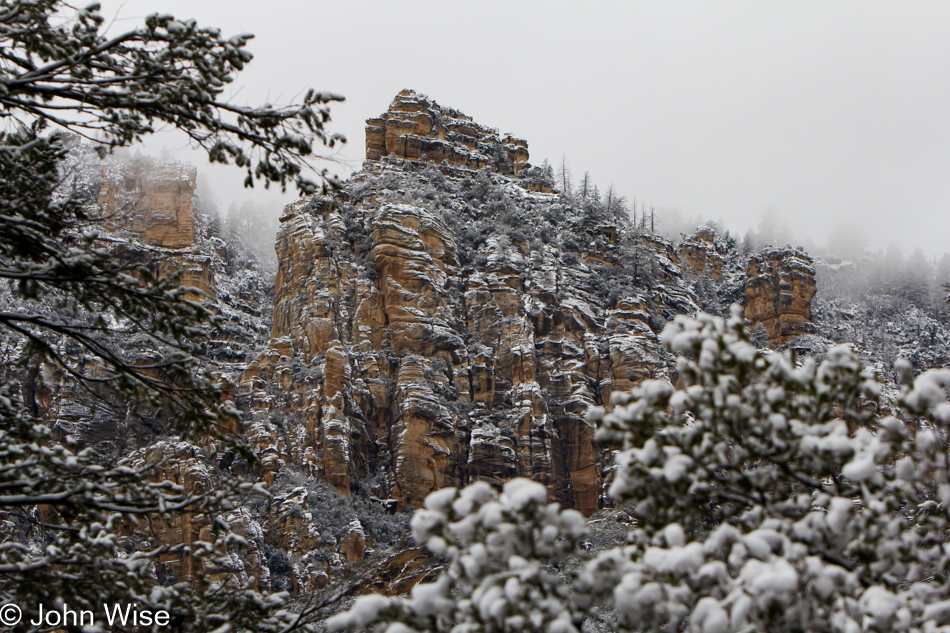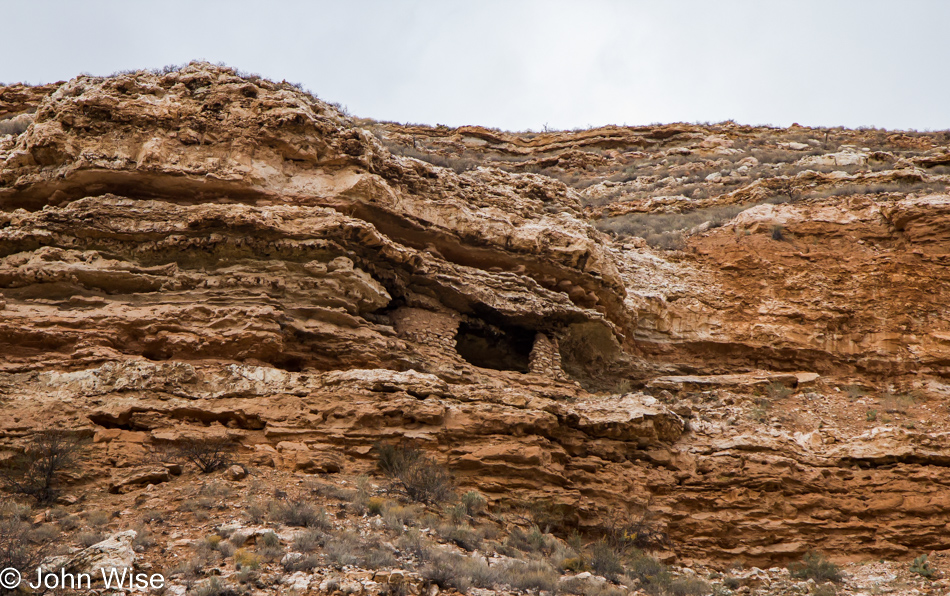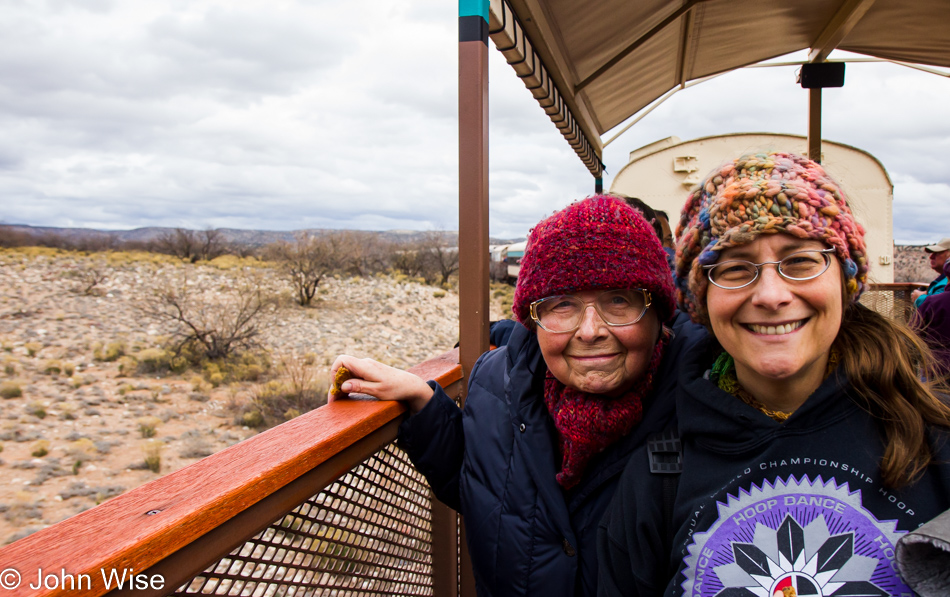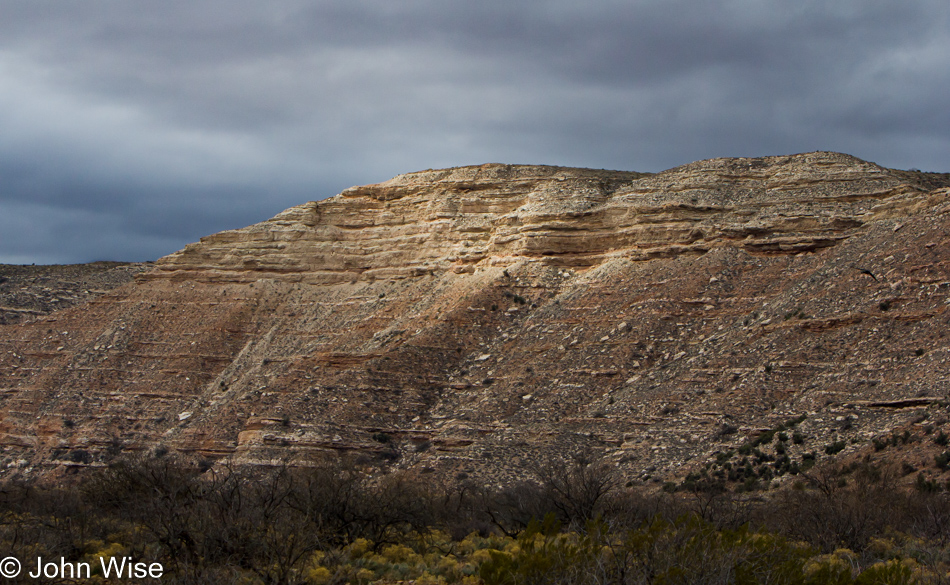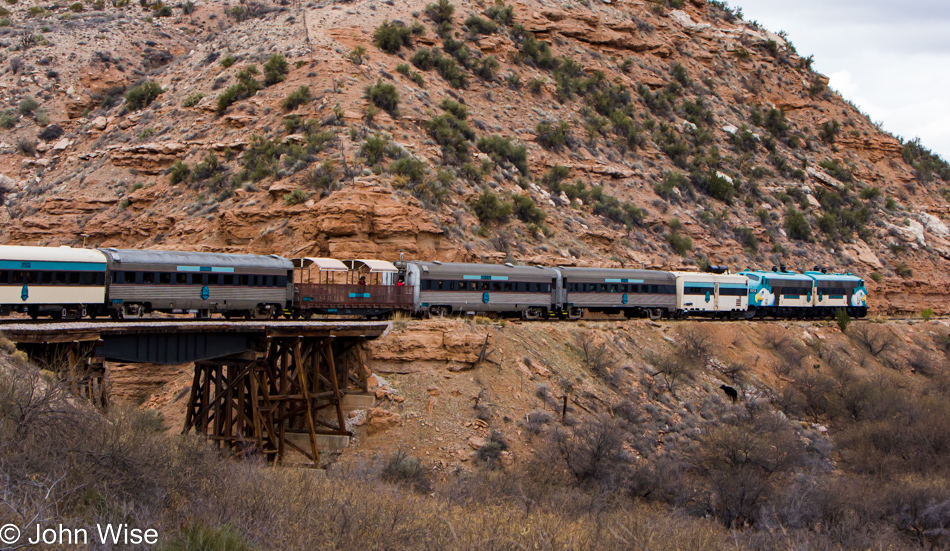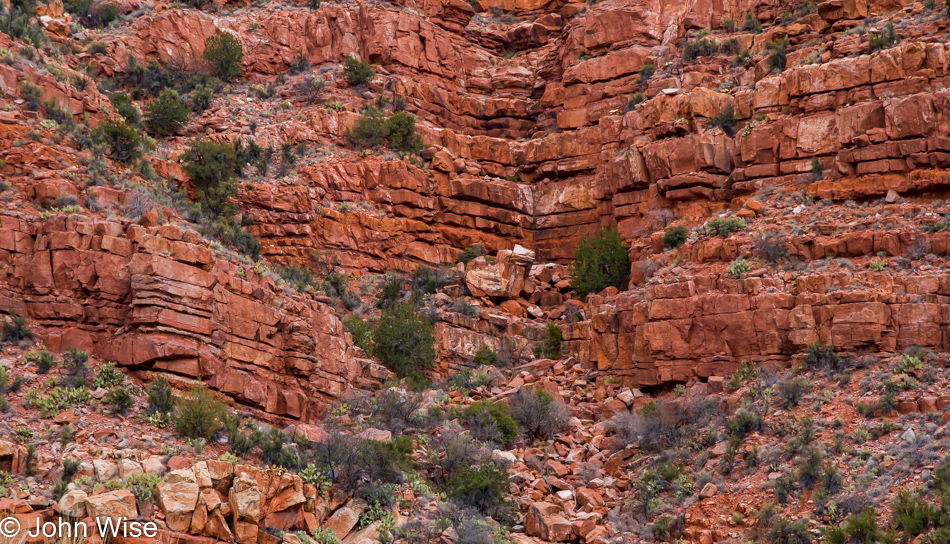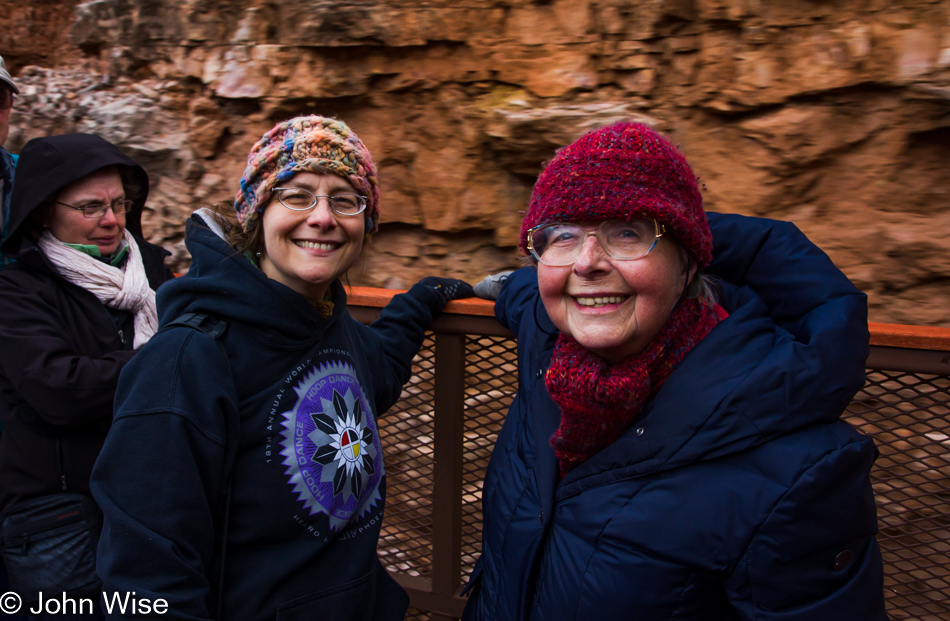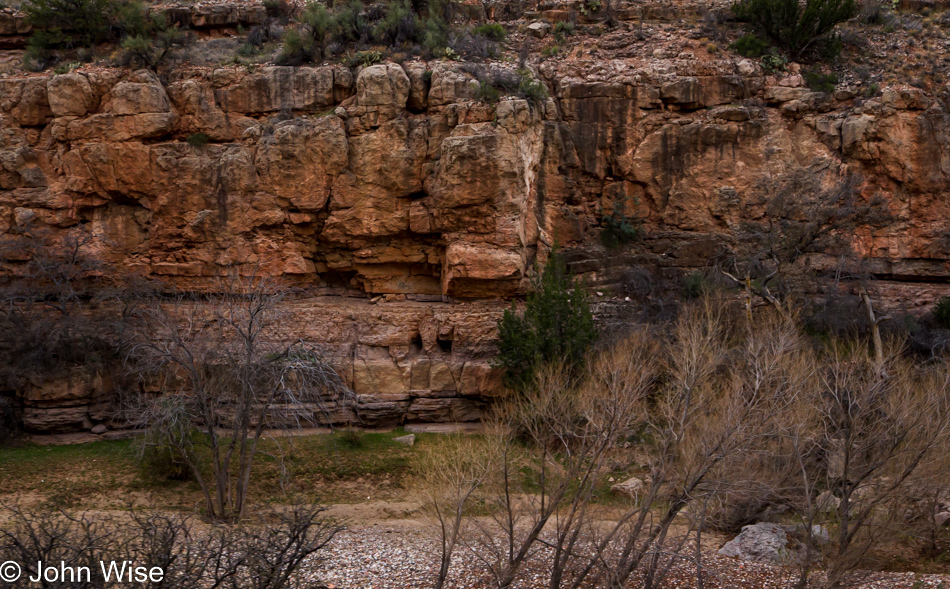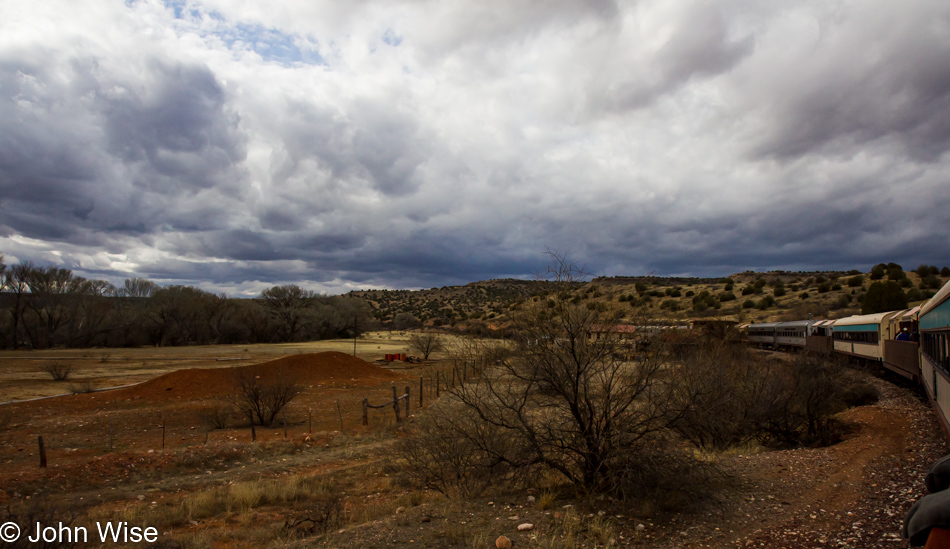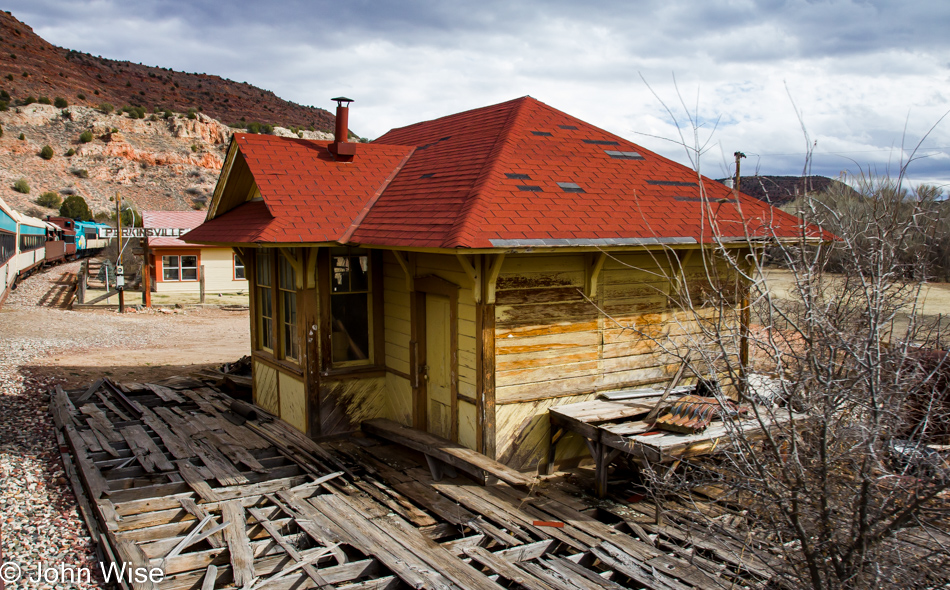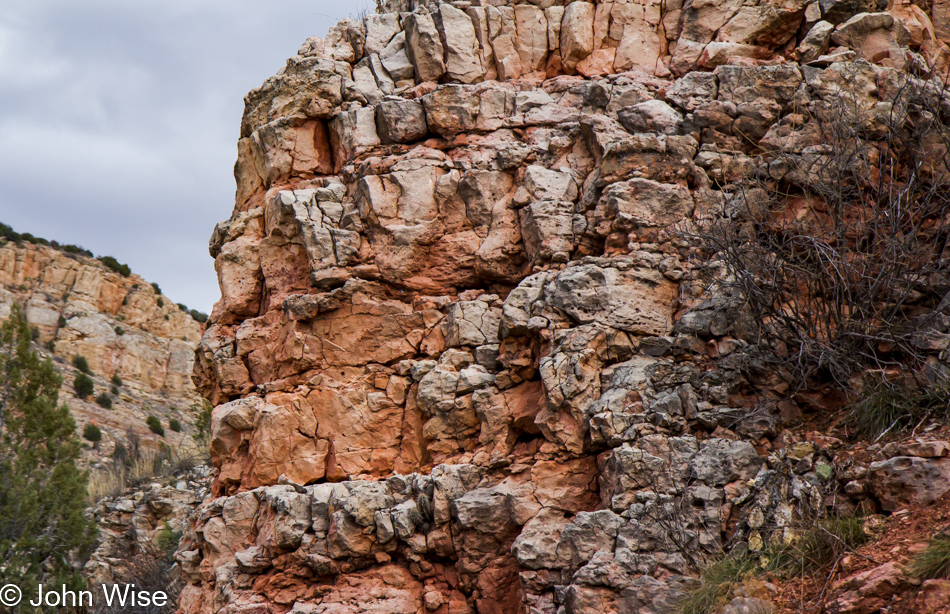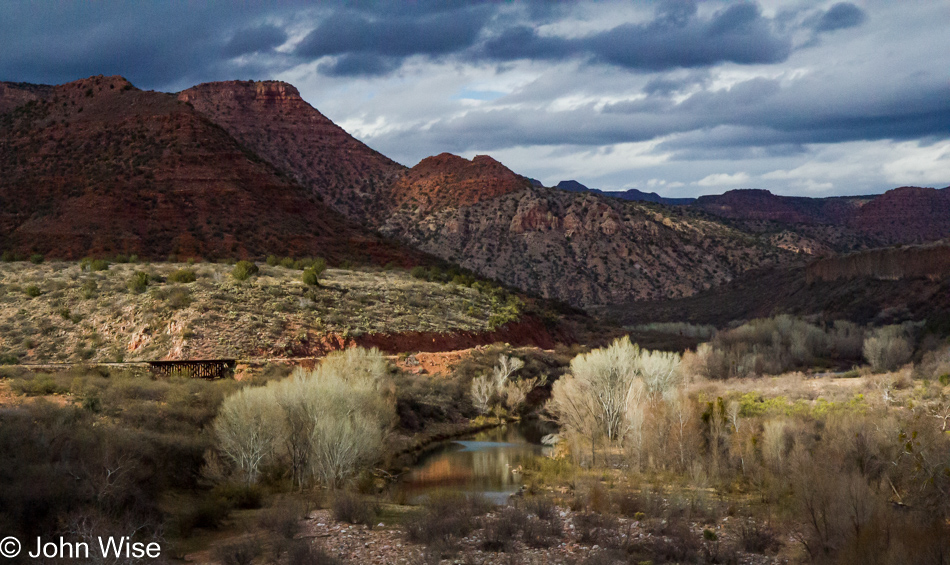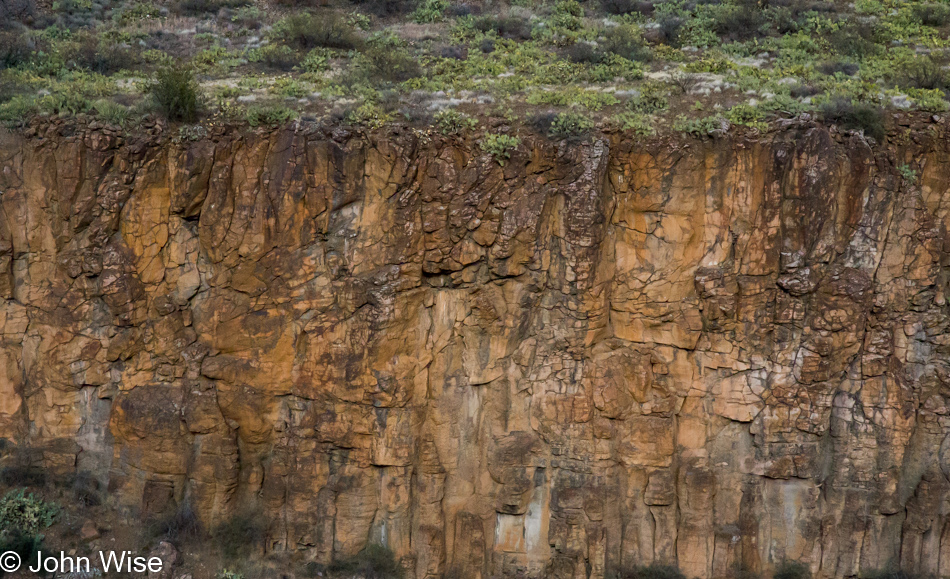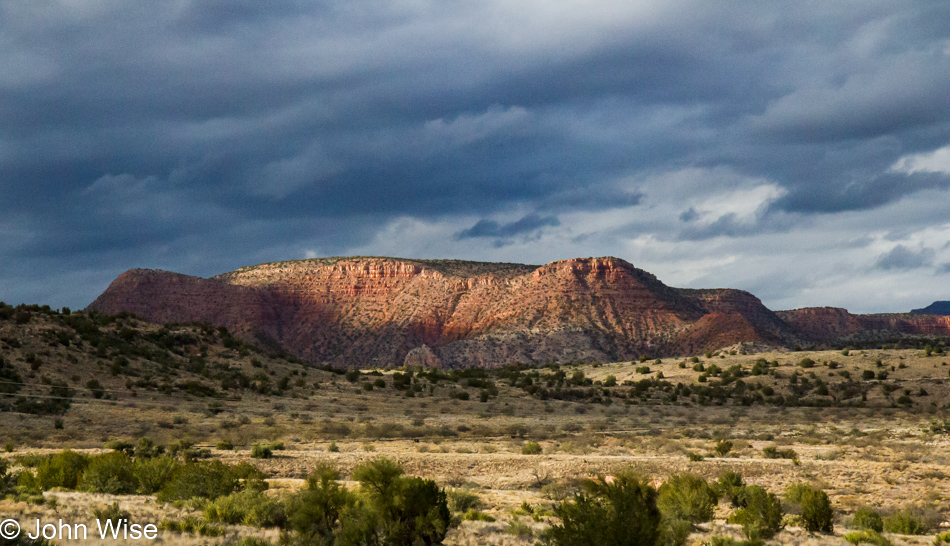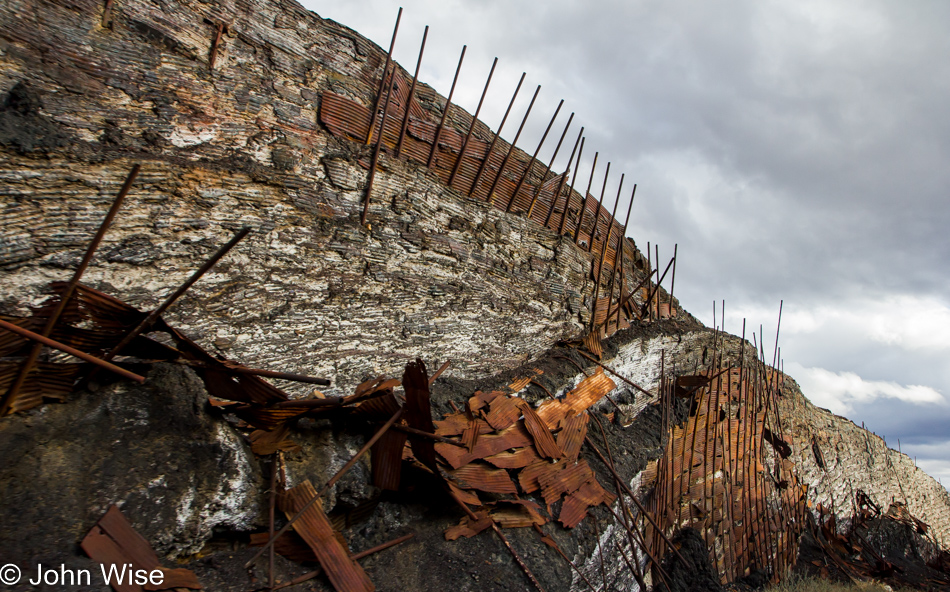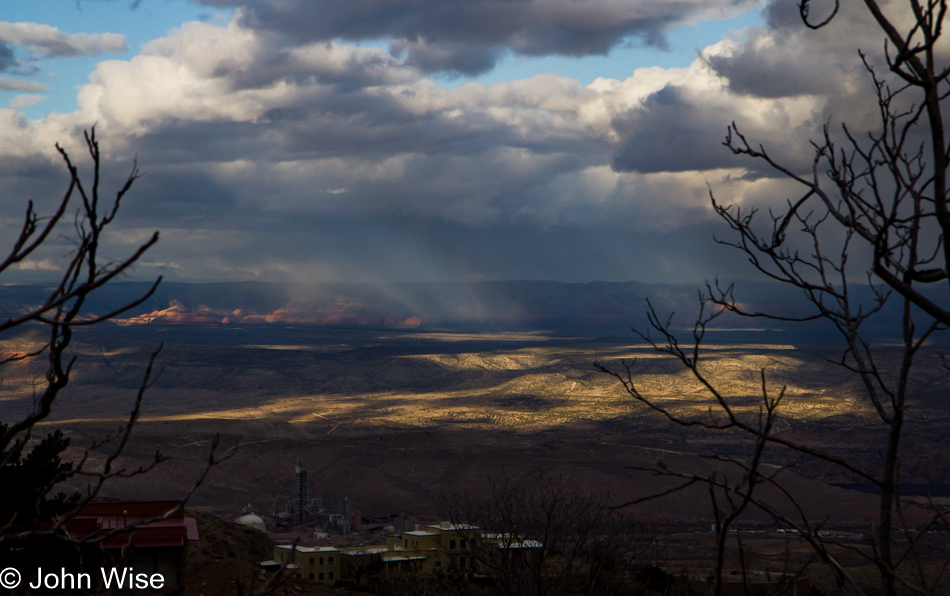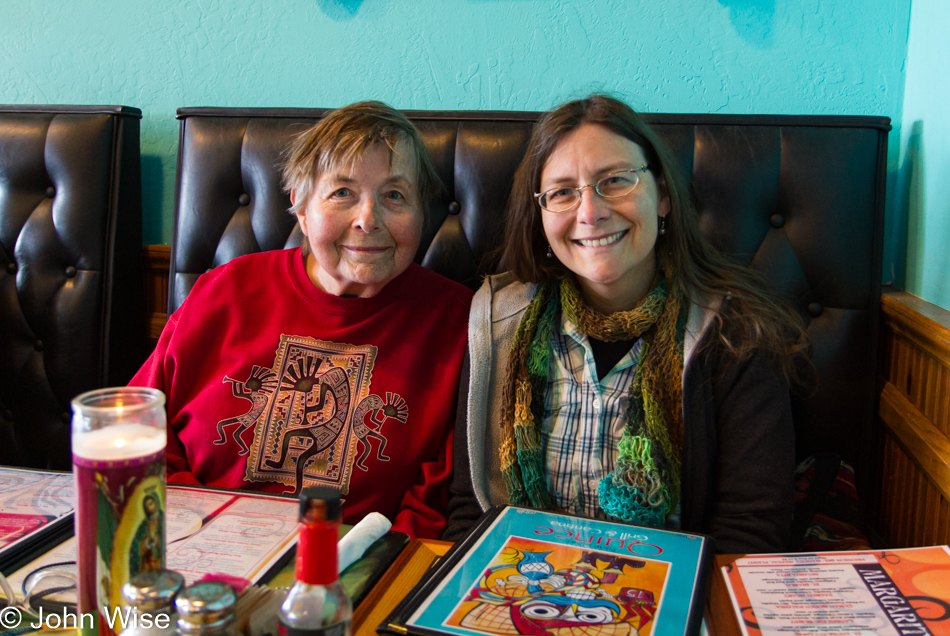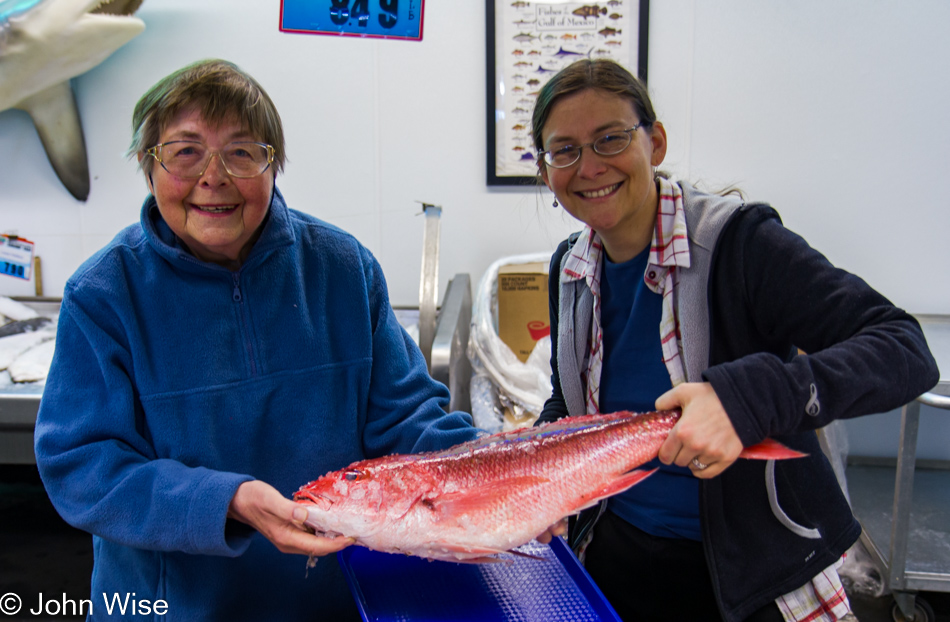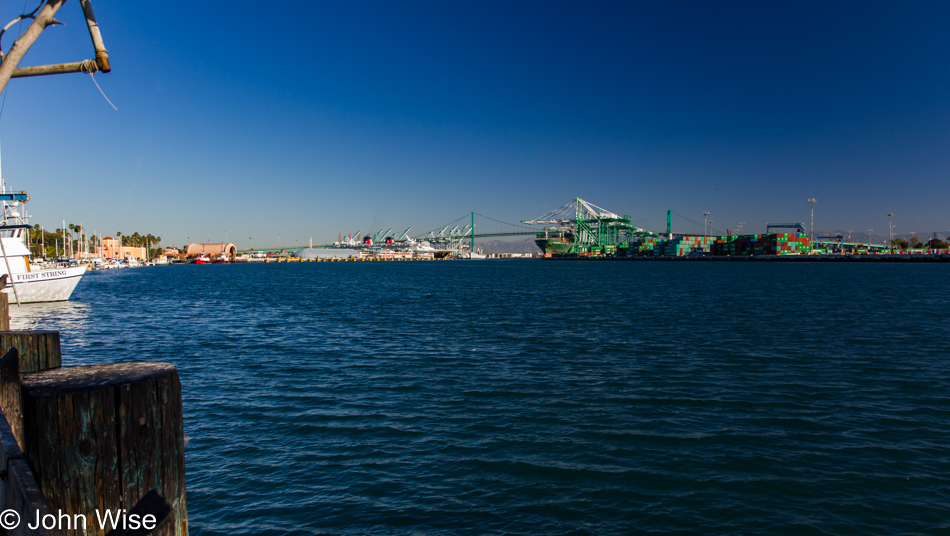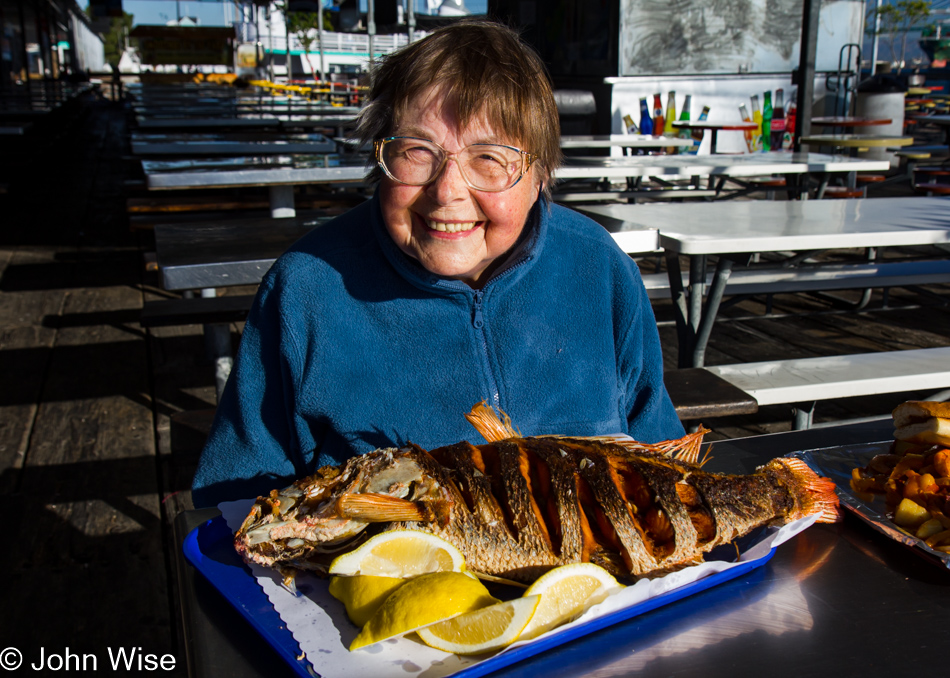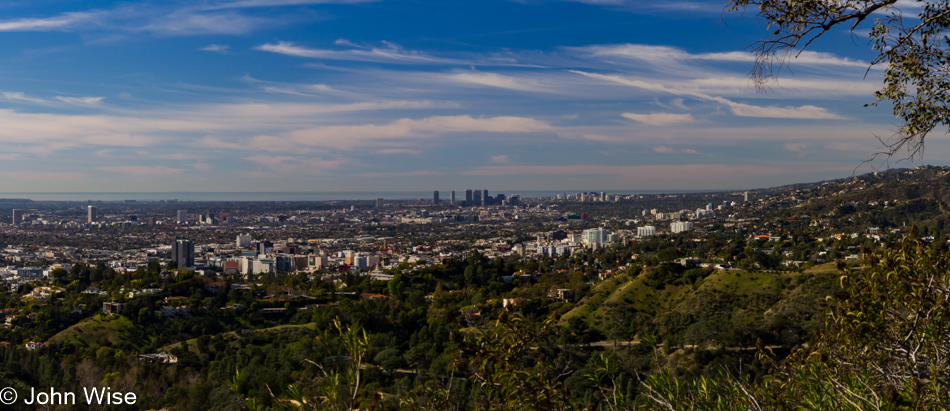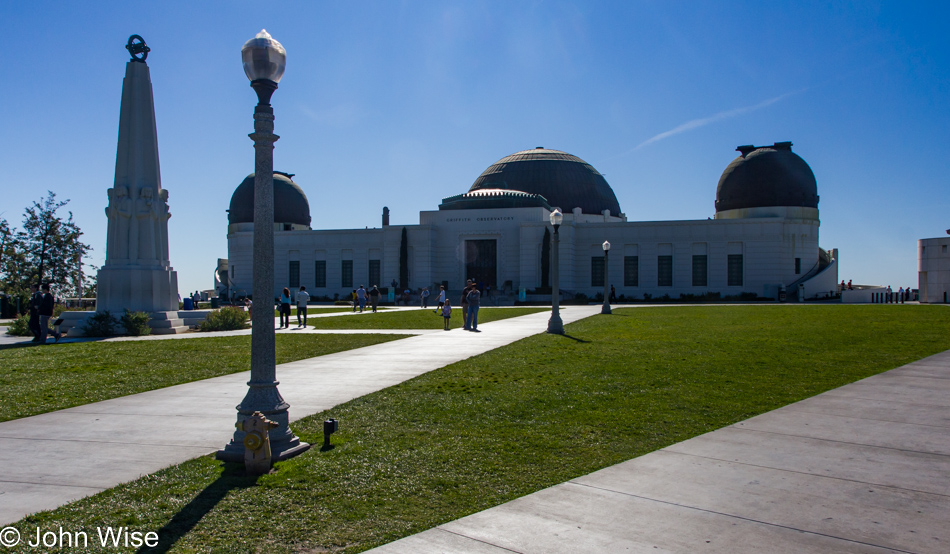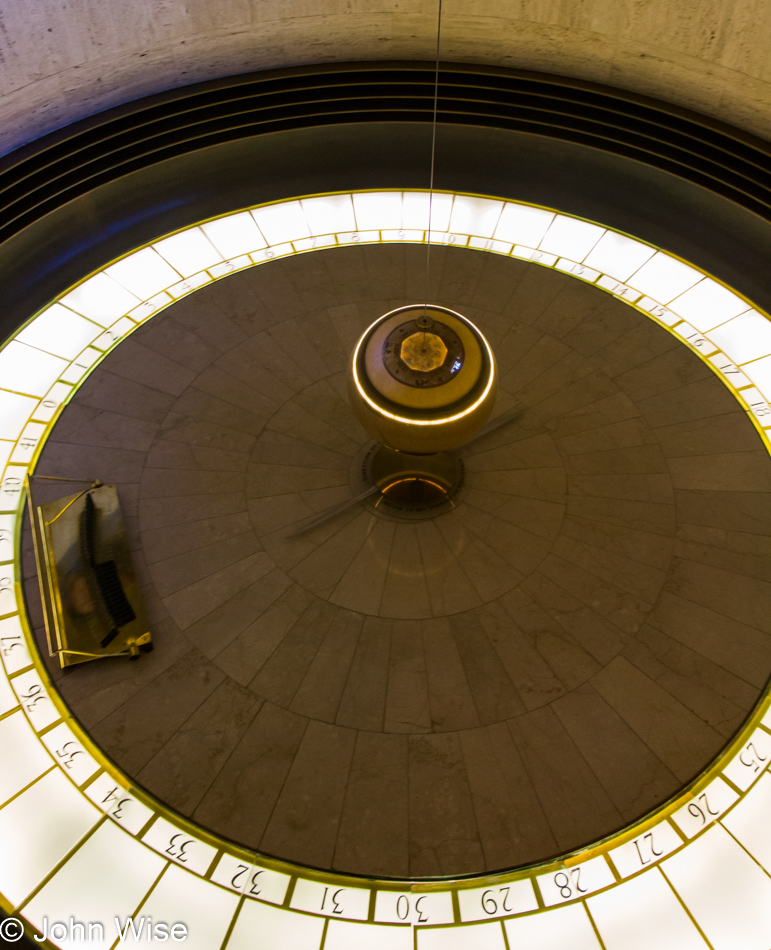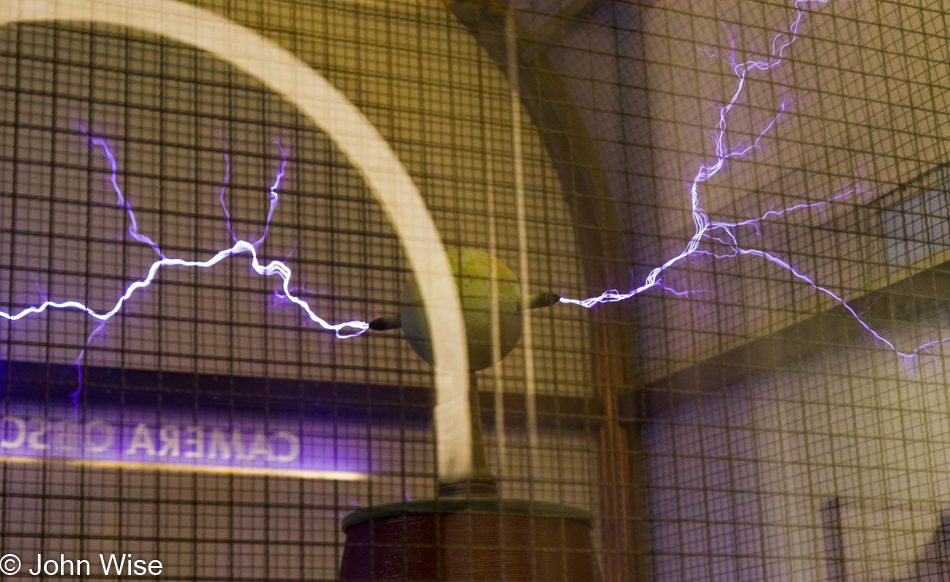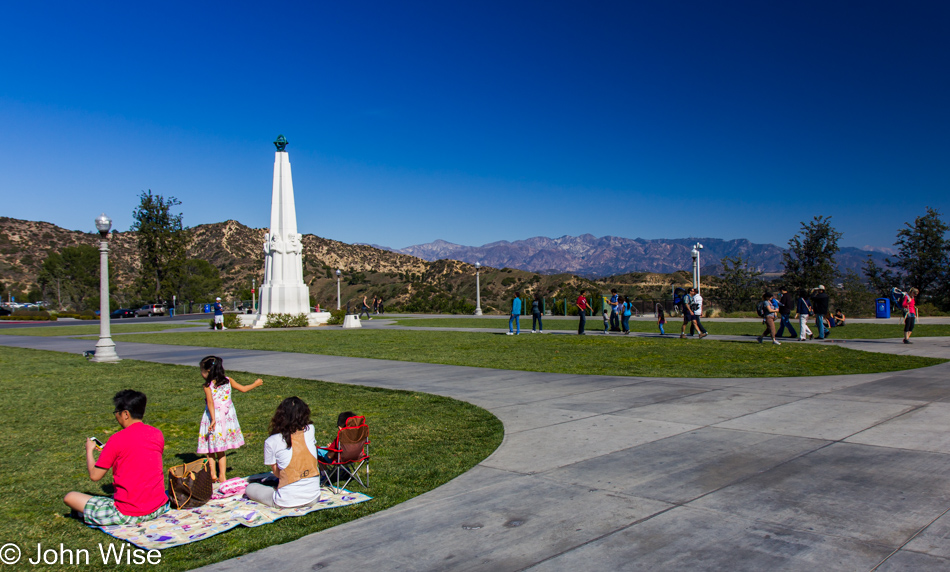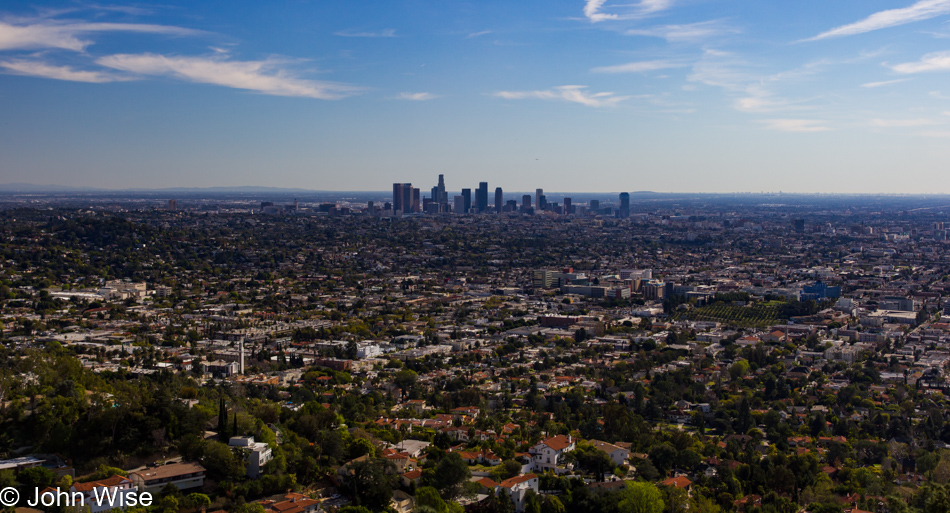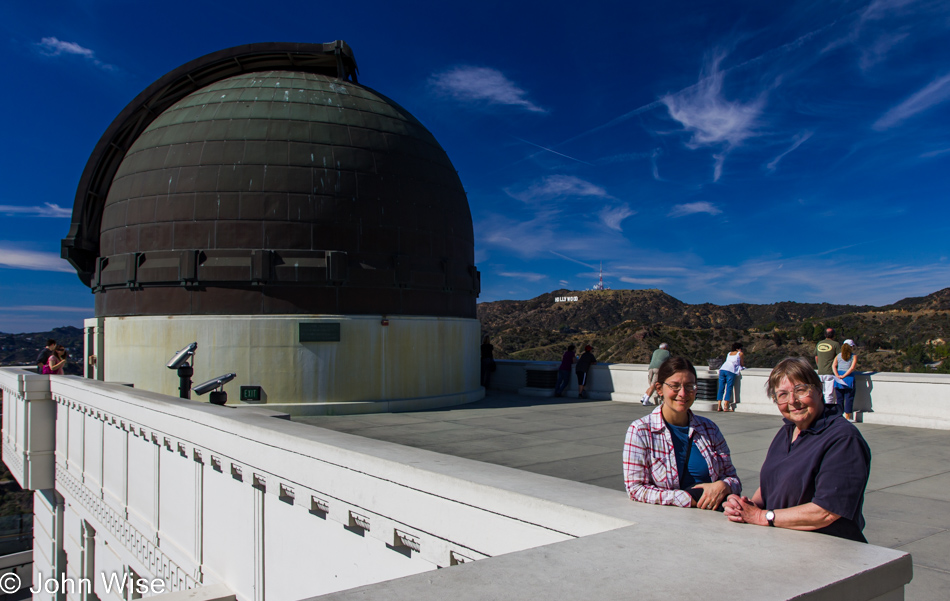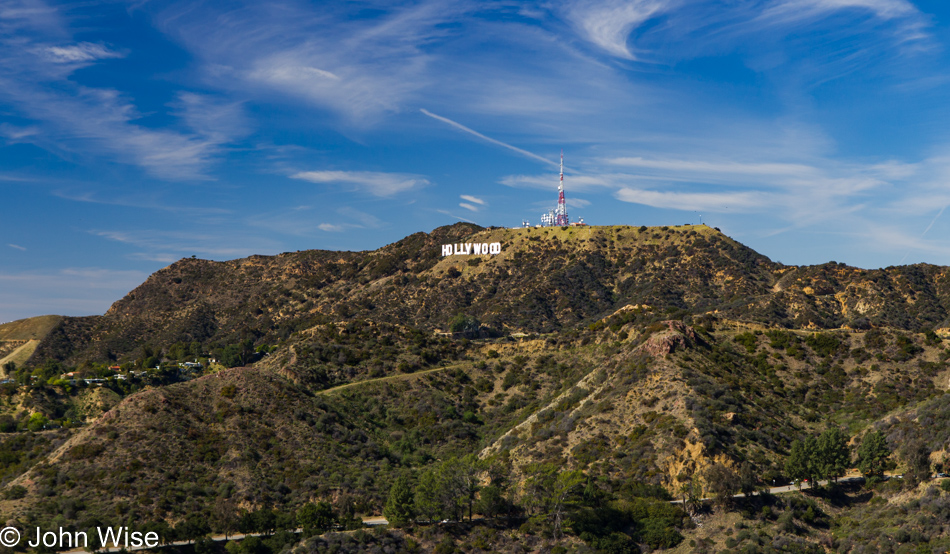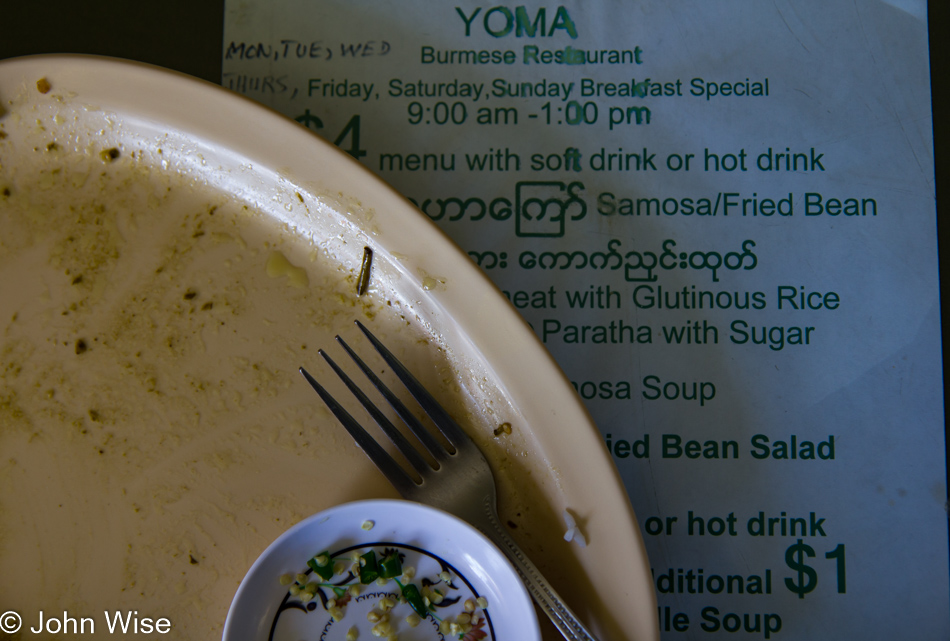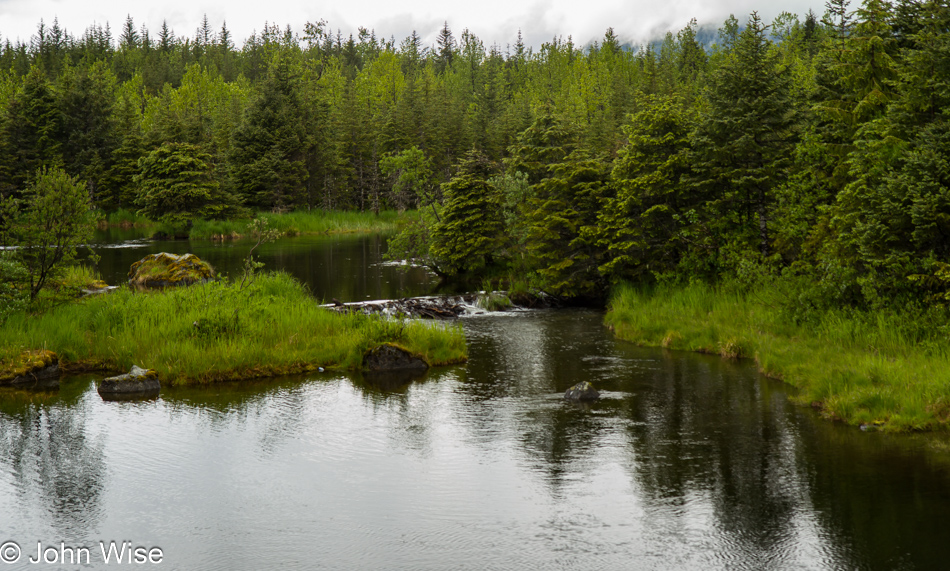
Today was the grand arrival; we landed in Juneau, Alaska. This is the 50th state for Caroline and me to visit, although there’s a whole lot more to see of this land than the little corner we are exploring on this journey north. Flying in left much to the imagination, as for most of the flight from Seattle, our view was that of a heavy cloud cover. Moments after dropping below the shroud, I couldn’t contain my excitement and infectiously pulled Caroline into my enthusiasm when I pointed out that I could see a glacier. The original plan had been to land, call the hotel for a shuttle, and maybe get a taxi into Juneau proper for some sightseeing. Scratch that; we are renting a car so we can go have our first encounter with a glacier. Mendenhall Glacier was just up the road; soon, we were too.
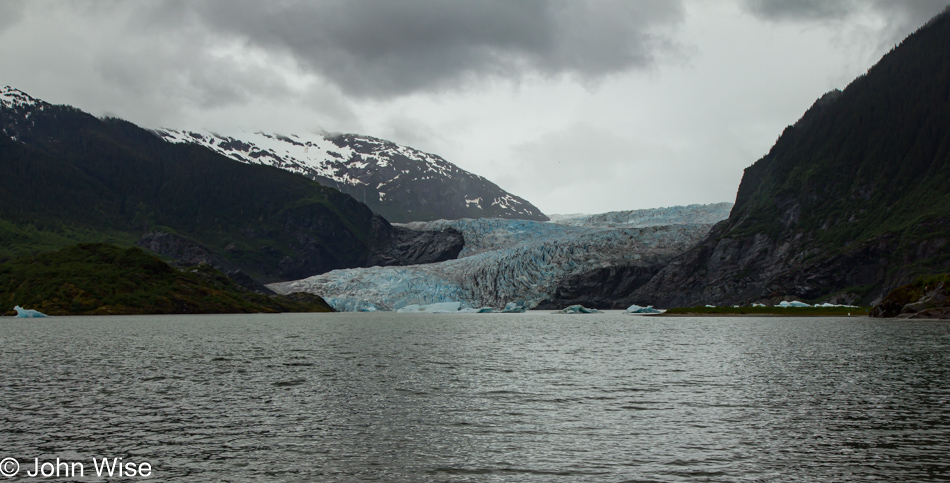
Mendenhall Glacier. Okay, so we’ve now been everywhere in the United States. We are like children on Christmas day here. Containment of the exhilaration we are feeling would be like trying to contain a cloud burst. A glacier! Not just any old glacier either, one with a name that smacks of English royalty. You don’t need to correct me; I know it’s a medieval English town best known for the Royal Air Force, but today, this glacier is king.
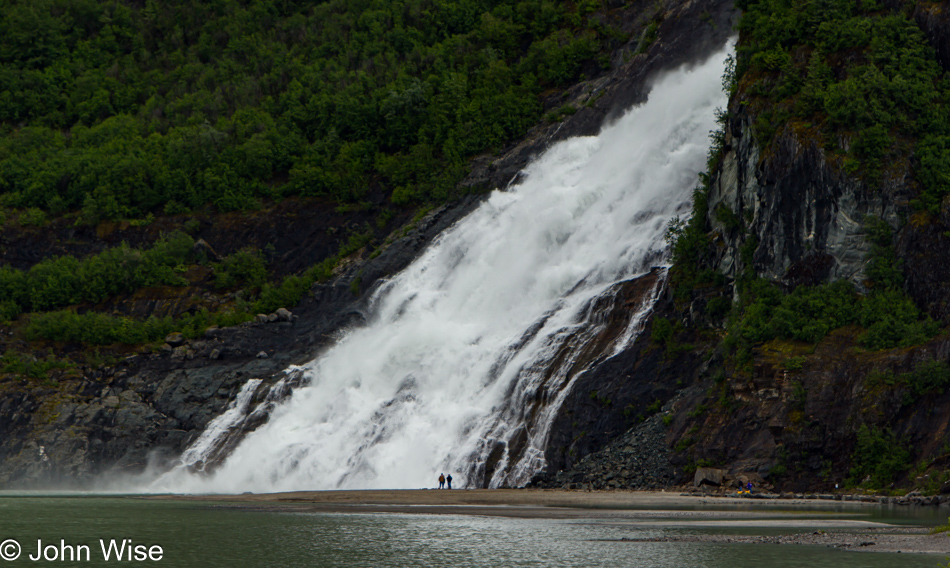
Astonished and overwhelmed. That is our normal when visiting a state for the first time, and can’t believe our luck that “WE” should be there. Compounding today’s excitement is the knowledge that we have earned bragging rights of having been to all 50 states. Yes, I know I’m repeating myself, but that is just what we do a hundred times while we are standing there, mouths agape, as we ask each other, “Can you believe it?” We may never understand how others, apparently on their first visits to someplace new, maintain such composure. If it wasn’t for our reverence of nature, you can bet we’d be screaming holy expletives at the idea that we are gawking at this spectacle of beauty.
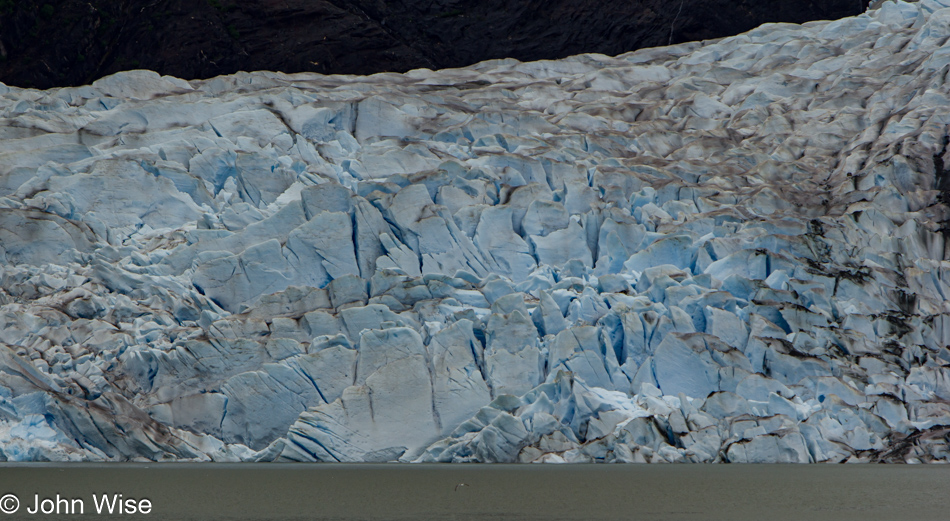
Got a kayak? How do we get out there and touch this? Not exactly an inviting facade, maybe even a very dangerous one, but who can resist the idea of cozying up to the face of a glacier? And what of the chance of a calving chunk of ice the size of a convenience store falling off to crush us and maybe even kill us? Okay, forget the kayak. Short of sharing our mantra of repeating, “OH MY GOD!” I cannot convey where we were mentally. Physically, that’s easy: onshore, still with mouths wide open. Good thing arctic terns nest on surfaces and not in cavity nests, as I’m sure one of our mouths might have looked like an inviting place to call home.
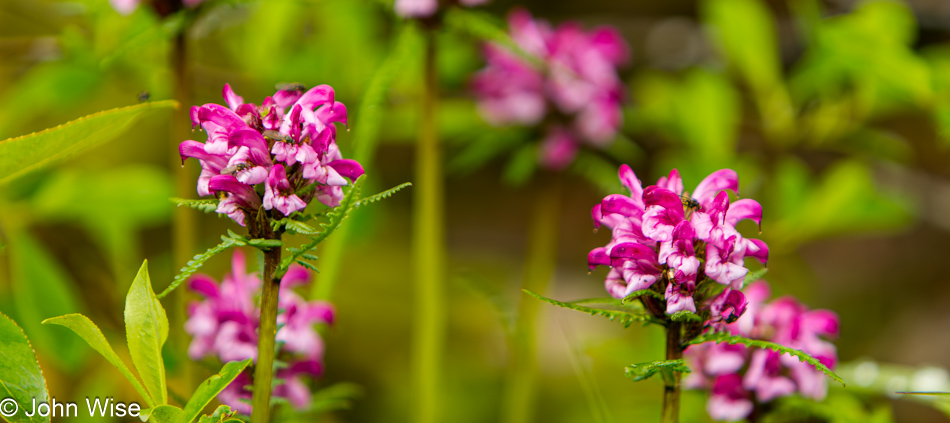
The Sudeten lousewort blooming in June is also known as fernweed. The timing of this trip to Alaska has not been left to chance; there was an intention behind making plans for an early summer trip: to maximize our opportunity to see wildflowers. Of course, there were other intentions too, namely a river we’ll be traveling on. That bit of information will be detailed in tomorrow’s blog entry. For now, we are content to explore the area adjacent to the glacier.
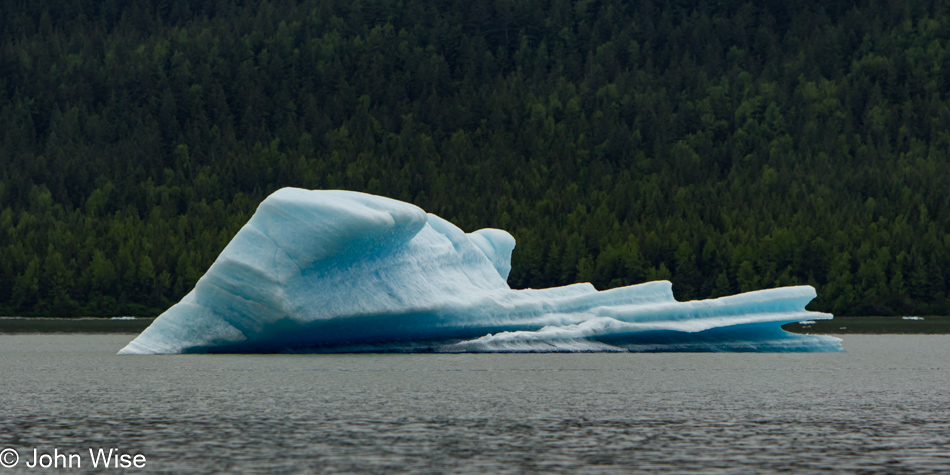
It’s one thing to see an iceberg in photos, on TV, or in a movie, but to see one in person, well, that’s like being on a savanna and watching a lion catch a meal. Not that I’ve personally been to Africa, but I can imagine the tension mounting as one is about to witness nature in action, and then it happens: the chase is on. It’s just like this moment right now. Though there’s not much chase, not even any perceptible motion, nor will the iceberg be devouring any fish, beaver, or birds that may enter its zone. Nope, it’s just a giant chunk of glacial ice moving at glacial speeds. It is the coolest piece of floating ice I have ever witnessed. Come to think about it, besides an ice cube in a drink or a frozen lake surface, this is the only massive piece of floating ice I have ever seen. Wishes for it to roll over went unheeded.
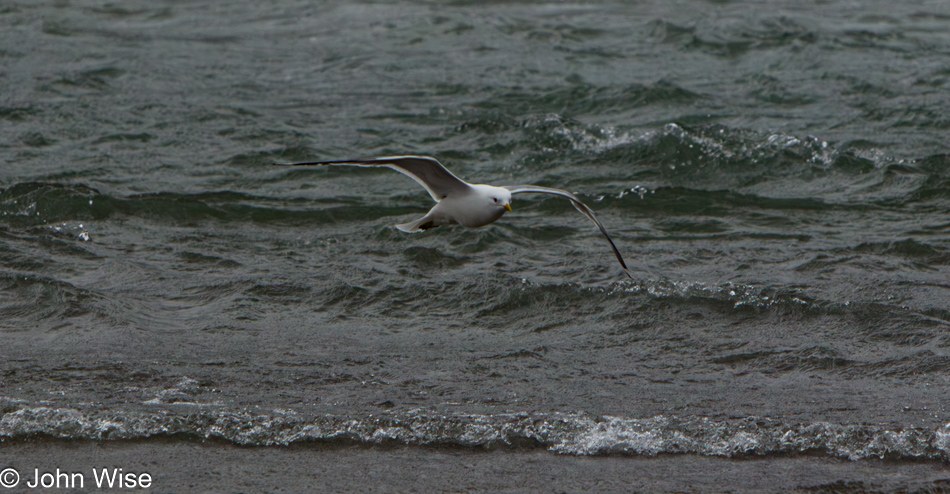
Arctic terns were nesting during our visit. Terns are quick flyers and dart in any direction with incredible speed; that’s why I don’t have a photo of one of them. Instead, I offer you this seagull, which was much easier to capture. Couldn’t spot any chicks yet, but for all I knew, they were right there under our noses. If ever there was an argument for augmented reality, for me, it is right here, right now. If Google Glass wants to do me a favor, give me an overlay of information regarding the natural world. I’ve already learned how to navigate the cities I visit, well, except for that tiny problem of finding a public restroom, but I really want to know more about the nature surrounding me here today. What is the lifespan of an Arctic tern? Are they migratory, monogamous swimmers? How big was the Mendenhall Glacier 30, 50, or 100 years ago? Does the waterfall on our right flow year-round? Before I got home at the end of our great north adventure to learn that the flowers above were of the Lousewort family, it would have been great to have a mobile device that already knew where I would be during this trip and that I would want to know everything I could about the local flora and fauna. Let’s go National Geographic; it’s time to get into educational augmented reality-based software!
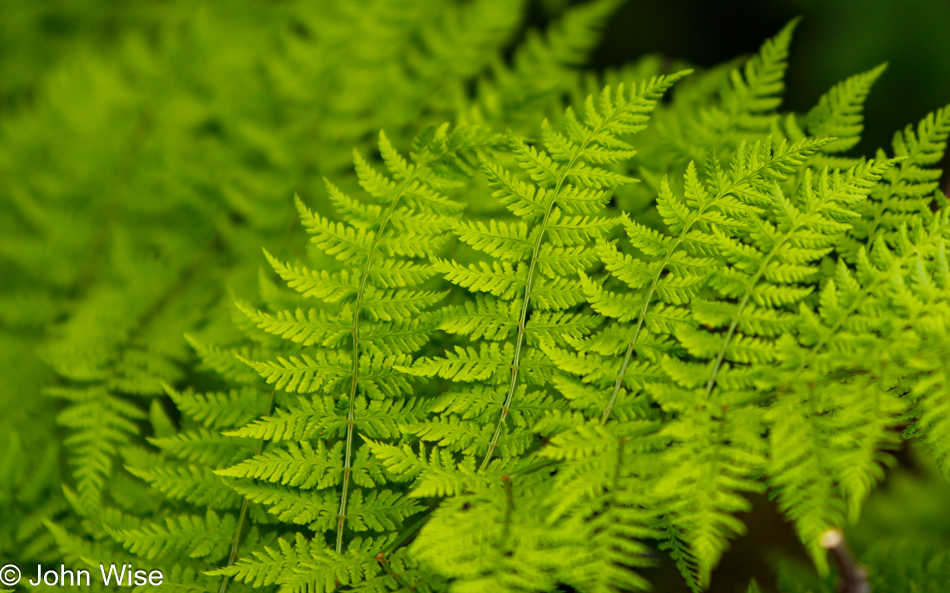
Lush, deep green, and dense, just the way I like my women, oops, I mean plant life. Eye candy should seduce you, drag you in to see more, and never quite produce the total state of ecstasy one seeks, thus bringing you back for more. Botanical eye candy is like a drug to me. It allows me to better understand the animal that falls into it, writhing and wriggling in delight. Maybe it gets high when rolling deep in the luscious carpet of greenery, just as I am by merely staring at this abundance of enchantment. Hey buddy, want some green stuff? It’s really potent, man.
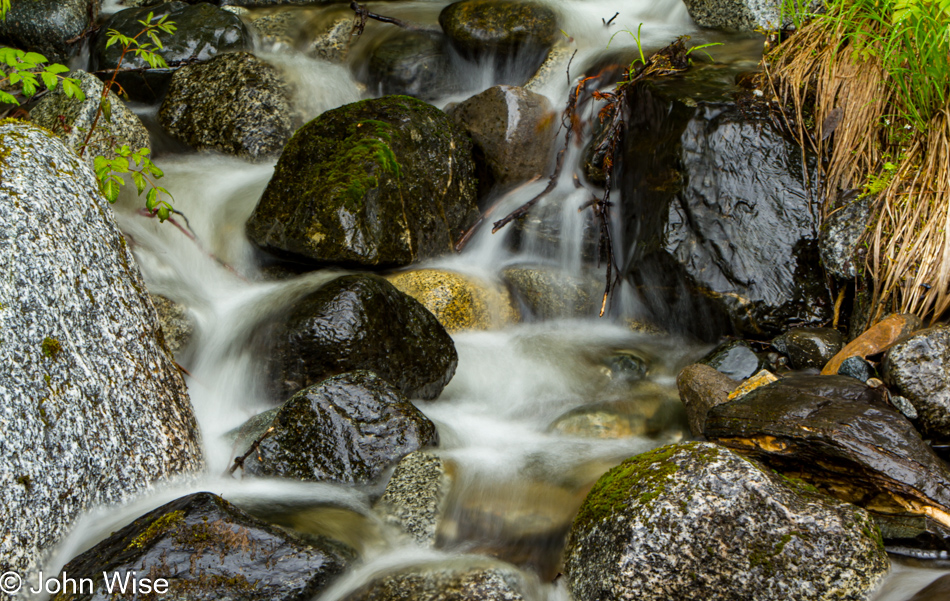
Leave the camera’s shutter open a few seconds while focused on rushing water, and the ephemeral wisps of its splashing droplets take on a mysterious, otherworldly feel. It never fails for Caroline to stop at these outflows and plead with me to shoot a long exposure. I oblige her when possible, as I, too, love this effect. We have a soft spot for these beautiful little streams and cascades; who doesn’t?
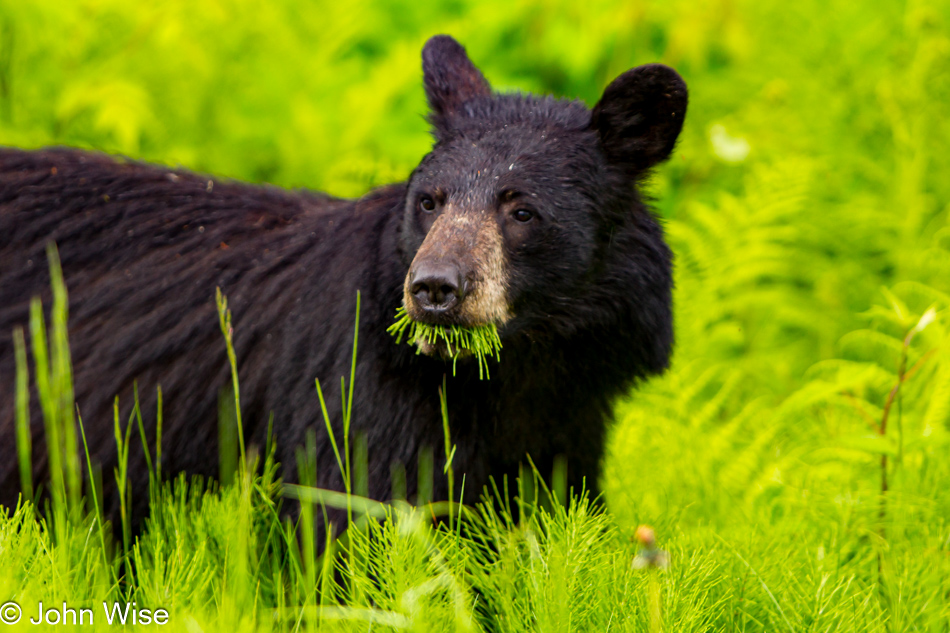
Nom, nom, nom, murmurs the bear while noshing on the fine roadside greenery. With the abundance of what may be his favorite mid-day snack, this bear paid no attention to us. Of course, I didn’t challenge this safe arrangement by throwing Caroline out of the car to see if she could persuade the bear to perform some antics for us. Had I done that, I am certain I could have captured a picture that would be a hit on Imgur, while the car behind us might have gotten video footage of an idiot pushing his wife into the path of a bear, allowing him the big YouTube score. Now, I wouldn’t have really done any of this, but don’t you ever wonder what the thinking is behind some of these profoundly stupid situations people get into before finding a minor celebrity on the internet? By the way, I cannot verify if the plant the bear is eating is actually as yummy as it appears to him. Maybe next time, I’ll try a mouthful. (Edit: The bear is eating Equisetum, commonly known as Horse Tail. – Caroline)

The weather wasn’t cooperating in offering us stunning panoramas, so we settled on this “drab” view where snow-covered mountains peak out behind low clouds to give us a hint of what exists in the distance. It is as though the full dimension of where we are is only slowly being revealed, and we are perfectly okay with that. Our imaginations fill in the gaps of what we are not allowed to witness yet; our expectations are soaring. The thrill of what is unfolding is electrifying.
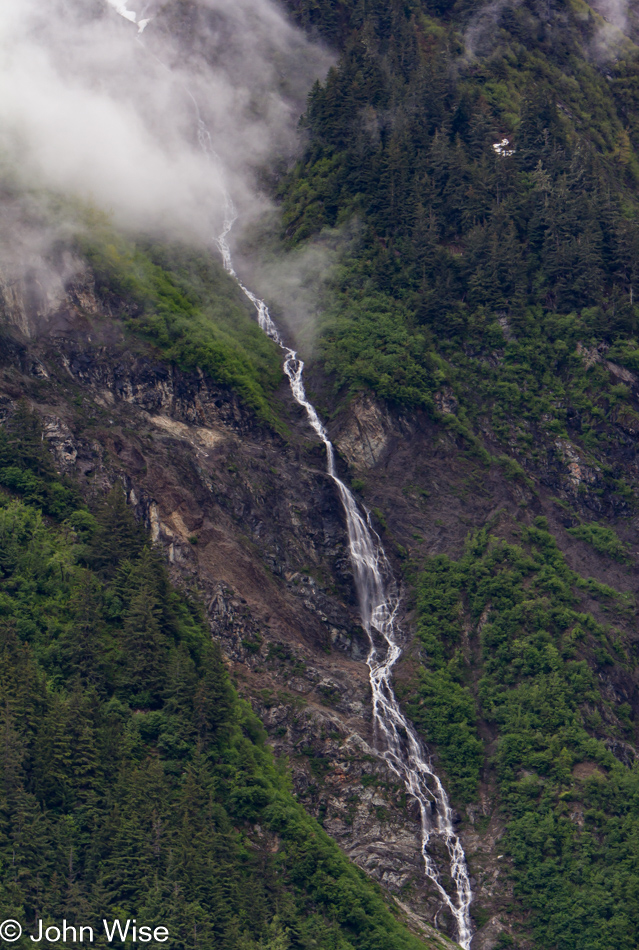
Not all things right in front of our faces are always apparent. On our drive north from Mendenhall, the mountains were mostly cloud-covered, and there was that bear that grabbed our attention. On the way back south, we spot this cascade that had emerged from below the weather. Had it always been there? Of course, it has, though this could also be a seasonal occurrence, only flowing with the spring and summer melt. We have to wonder, how many more cascades and waterfalls are we missing? Those thoughts of still hidden gems will make it easier on the days when we need to convince ourselves that a return to Alaska is required.
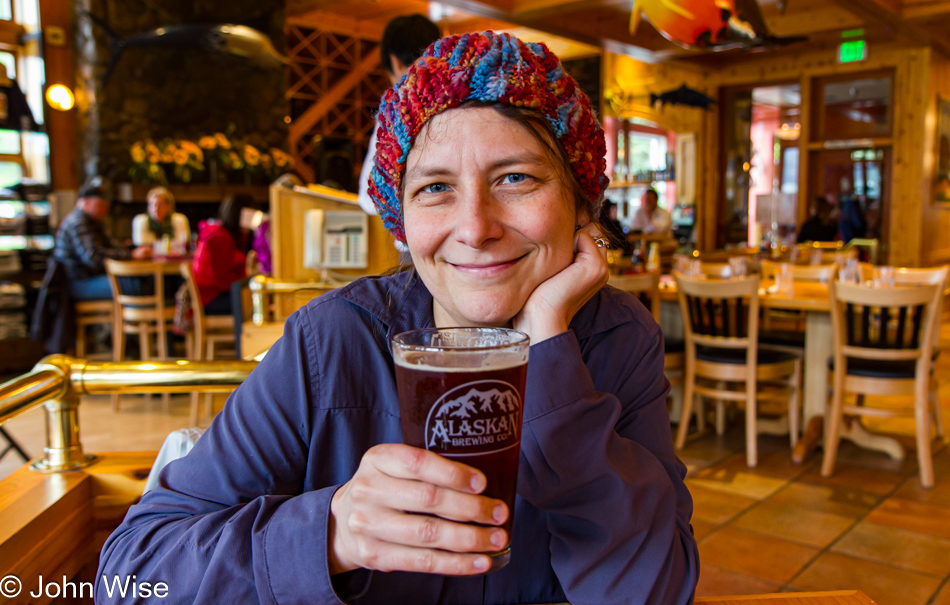
Time to call it a day. Not that the day is really over; it stays light around the clock here this time of year, but we were hungry and tired. For a capital city, there weren’t very many choices of where to grab dinner. We tried finding the local dive that might have been owned by a fisherman who only sold his daily catch, but that culinary treasure proved elusive. And so we satisfied ourselves with some nondescript waterside eatery that fulfilled at least two important functions. One, we were able to eat. Two, Caroline was able to enjoy her first beer in Alaska. Tomorrow, we get busy.
